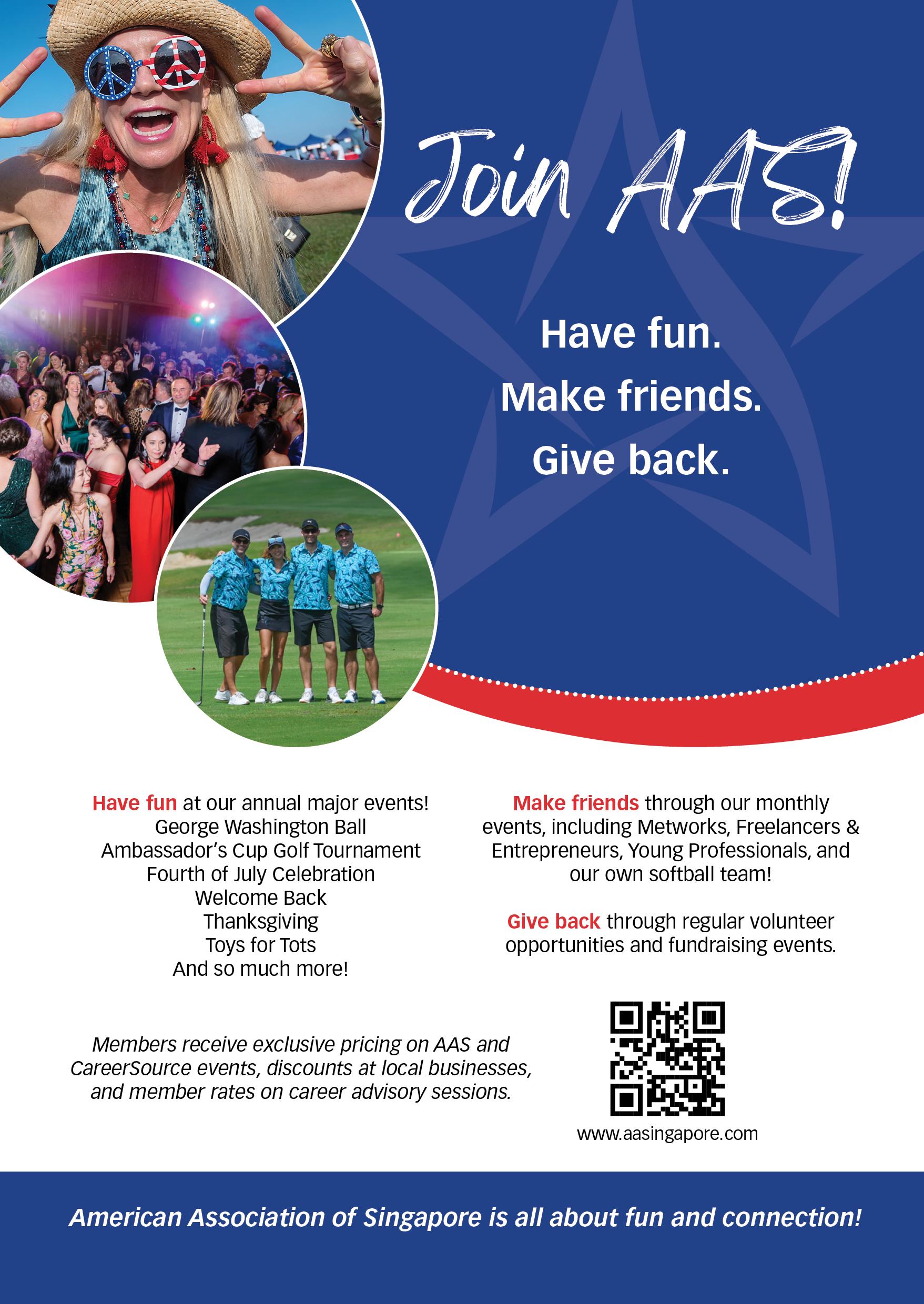
May/June 2024



May/June 2024



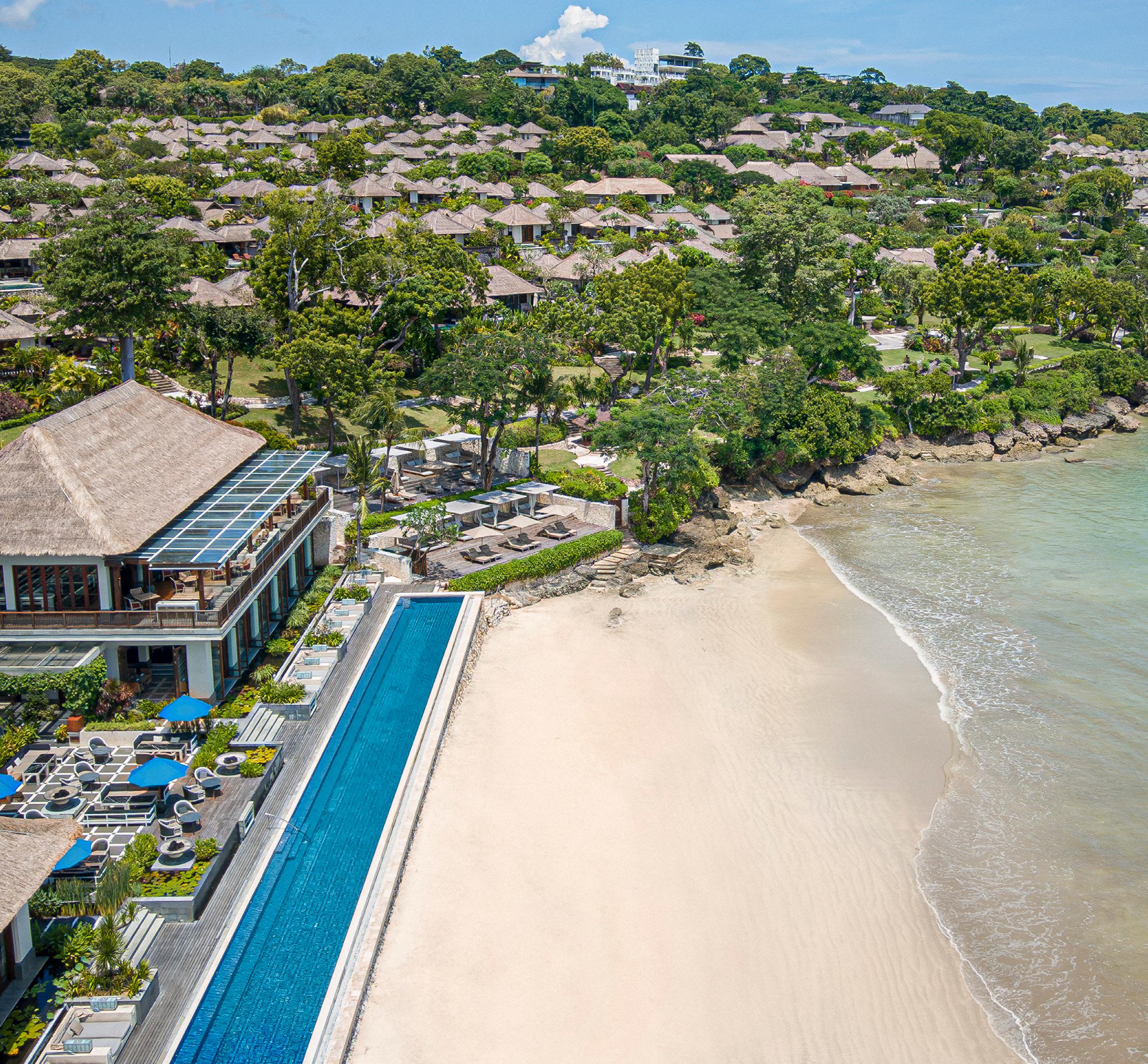
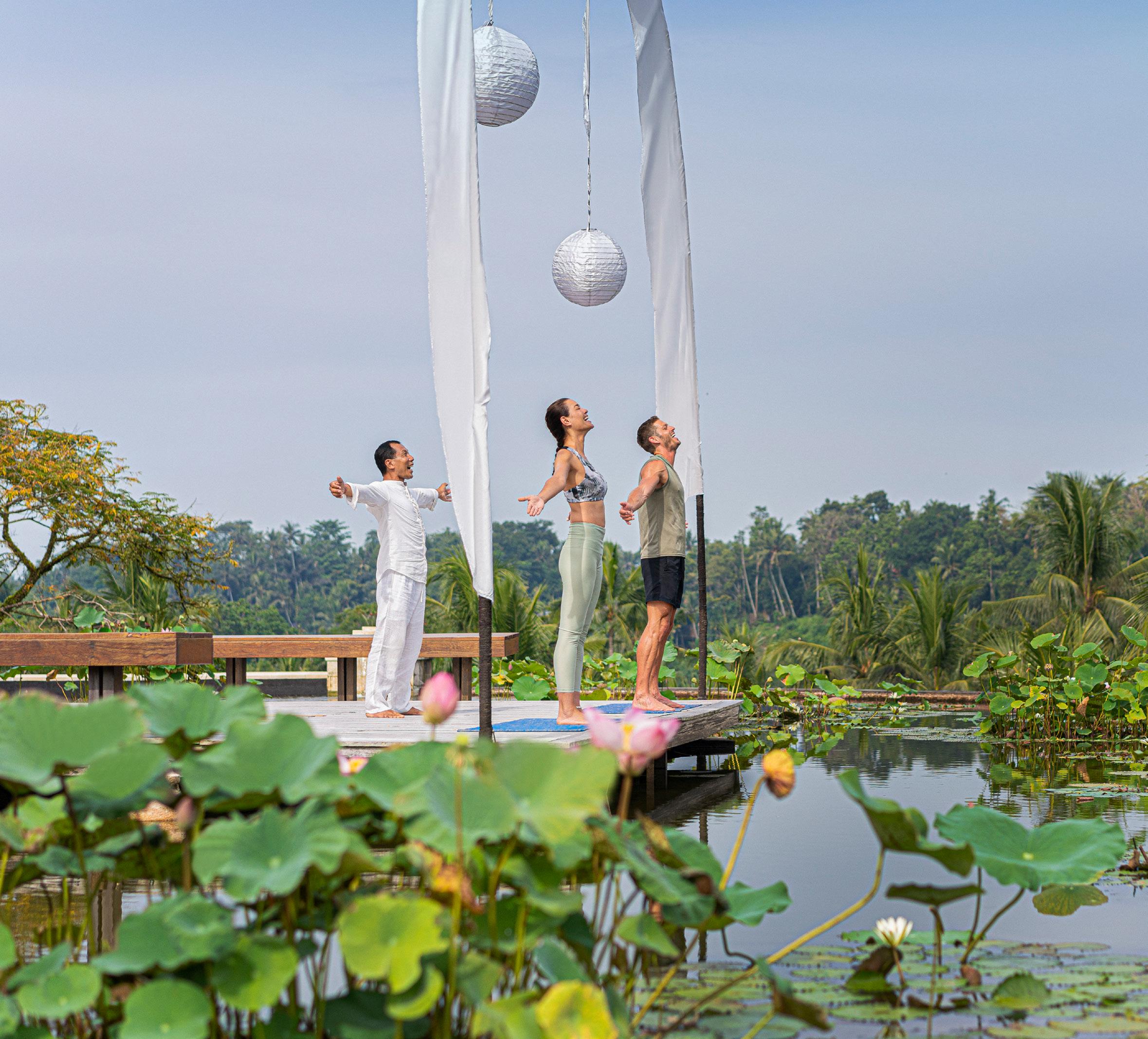

As many of us know, being an expat comes with unique challenges. Those challenges can come from differences in language, culture, environment, or a combination of all three. Throw kids into the mix, and you’ve got an even bigger set of challenges when you factor in school, relationships, and costs, to name a few.
In this issue, we have articles about many stages of expat life. We delve into what it’s like to be single in a foreign country. We’ve got a tongue-in-cheek look at being a parent in Singapore and some of the insanity that goes with it. A newcomer to Singapore takes us on her family’s ill-fated journey to the famed Treetop Walk. And we get some tips on life once kids have flown the nest.

At the Association, we had a great time at our 75th Ambassador’s Cup Golf Tournament, sponsored by XCL American Academy. We lucked out and didn’t get any rain, and the
Up next, we’ll celebrate the Fourth of July on June 29. We’re excited to be back at Singapore American School. Mark your calendars, and we
Editor-in-Chief
EDITORIAL
Editor-in-Chief: Susan Williams communications@aasingapore.com
Publishing Editor: Melinda Murphy generalmanager@aasingapore.com
LAYOUT
Graphic Designer: Susan Williams graphics@aasingapore.com
ADVERTISING
Advertising Manager: Thila Chandra thila@aasingapore.com
COLUMNIST
Andrea McKenna Brankin
CONTRIBUTORS
Talia Brown, Dr. Jeff Devens, Lisa Dellagiarino Feriend, Ruiheng Fu, Tiara Giles, Richard Hartung, Kyle Hegarty, Sara Madera, Melinda Murphy, Susan Williams
AMERICAN ASSOCIATION BOARD MEMBERS
President: Ashok Lalwani
Vice President: Mkulima Britt
Treasurer: Ed Fitzpatrick
Secretary: Jennifer Yarbrough
Directors-at-Large: Christopher Ellis, Idil Hasbay,Daniel Moss, Tianna Nguyen, Michelle Reeb, Priyesh Shah
AmCham: Dr. Hsien-Hsien Lei
AWA: Julia Tan
SACAC: Dan Levine
SAS: Kyle Aldous
The American Club: Dan Gewirtz
Non-Voting Members
US Embassy: Lisa Liao
US Navy COMLOG WESTPAC: Rear Admiral Mark Melson
AAS: Melinda Murphy
PUBLISHER – AMERICAN ASSOCIATION
The American Association of Singapore (AAS) is a professional, notfor-profit organization established to enhance the well-being and living experience of Americans residing in Singapore and to promote relationships, both business and social, between Americans and those from different cultures and nationalities.
56A Boat Quay, Singapore 049845 admin@aasingapore.com • www.aasingapore.com
Living In Singapore magazine will be released six times per year, with the purpose of enhancing the expatriate experience in Singapore.
SUBSCRIPTION
A subscription to Living in Singapore is complementary with an AAS membership. AAS annual family membership is $120.
To join, visit www.aasingapore.com and have Living in Singapore magazine delivered to your inbox. Reproduction in any manner, in English or any other language, is prohibited without written permission. Living in Singapore welcomes all contributions of volunteer time or written material.
FOLLOW US!
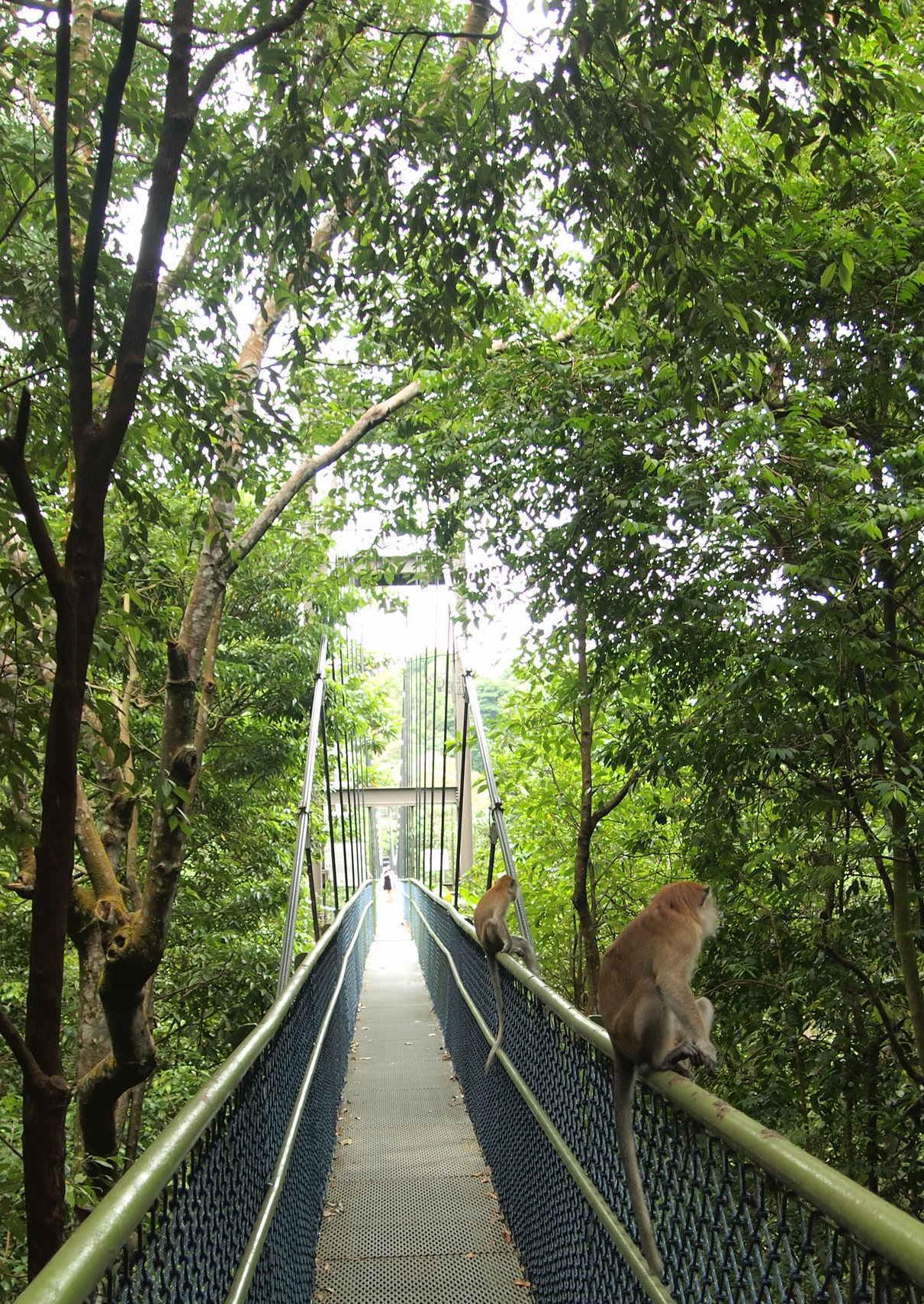

Community News
Living Single in Singapore
Ways to manage on your own
32 MacRitchie Misadventures A family's jungle journey

From Buggies to Bangkok The wild ride of expat parenthood in Singapore
Pawsitively Pawsome
Owning a dog in Singapore
Bali: Twice the Magic Experience both sides of this magical island
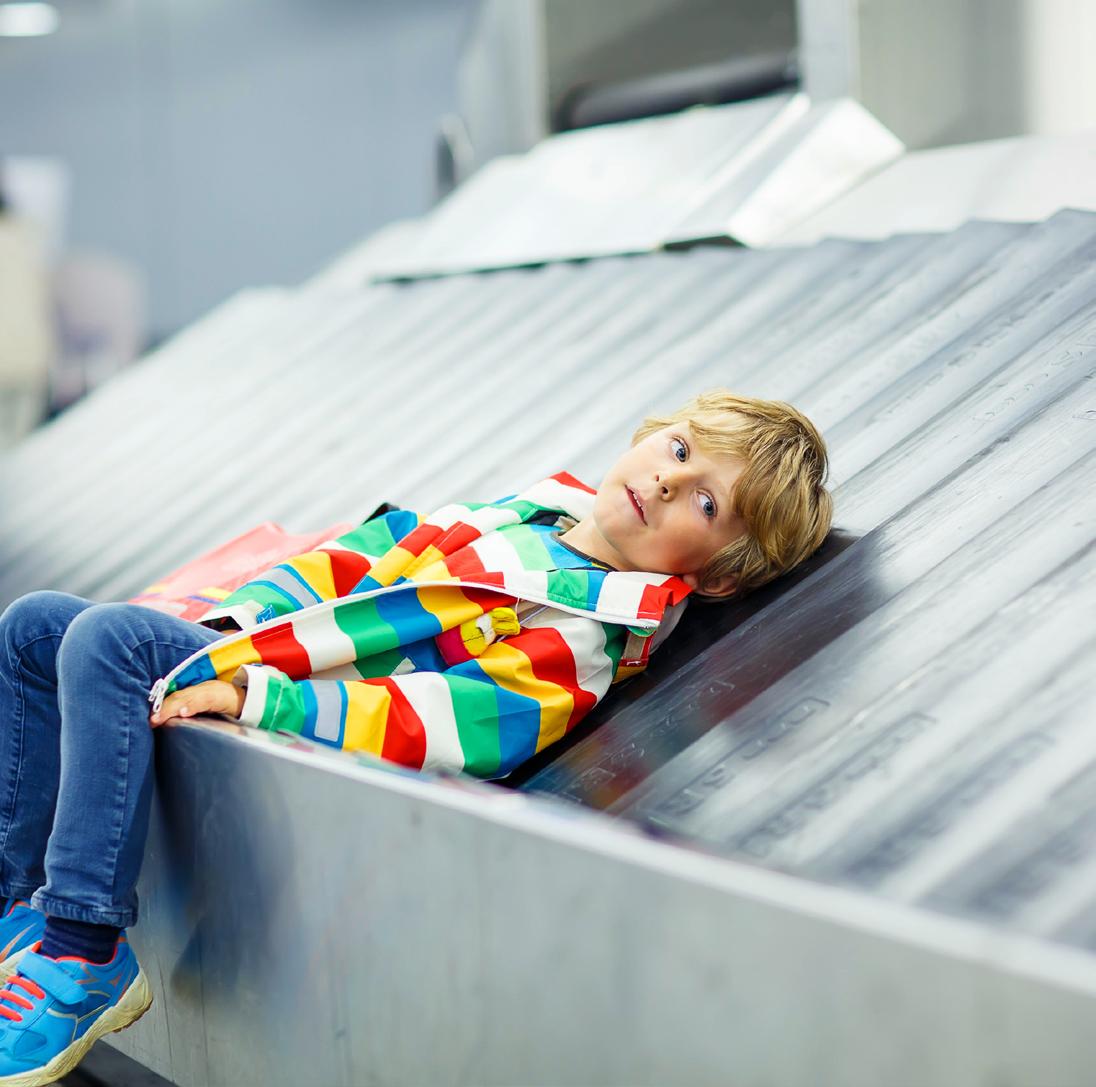


 By Ashok Lalwani
By Ashok Lalwani
Summer is fast approaching, and I am getting very excited about heading back to the US to watch our son receive his post-graduate degree and meet family and friends. Another highlight will be a weekend of barbeque, golf, and water activities with some college friends who truly are family. We are going back a bit earlier this year due to the commencement, but we often time it so we’re back in July when the weather is firmly hot. We can be there for the 4th of July and all the related festivities, including watching a small-town parade with some classic cars and clowns throwing candy.
This made me think about AAS and how wonderful it is to have an organization that brings some of these very American things to Singapore so that if I can’t be there, I can enjoy these things here with my Singapore family and friends. AAS has been doing that for more than 107 years!
With that in mind, I am very excited to tell you about our 4th of July Celebration which will be back at the Singapore American School, which is also the title sponsor, on Saturday, June 29. We will have carnival games, bouncy castles, contests, music, tons of food and drinks, and much more. Mark your calendars.
We just finished holding our 75th Ambassador’s Golf Tournament at the five-star Laguna National Golf Resort. We had 136 golfers soaking in a very sunny day of golf and fun. A special thanks to XCL American Academy, our title sponsor for this event, and our staff, who did an incredible job. We have many more sports and other activities planned in the next month or two. Please do visit us at www.aasingapore.com.
Wishing everybody safe travels as schools enter their final full month and a wonderful summer.
American Community Organizations Directory
AAS aasingapore.com
AmCham amcham.com.sg
American Dragons americandragons.sg
Scouts
BSA Troop 07: www.bsatroop07.org
BSA Troop 10: www.sgtroop10.org
AWA awasingapore.org
Navy League nlus-sgp.org
SACAC Sports safl.sacac.com
BSA Troop 1010: sgtroop1010@gmail.com




SAS sas.edu.sg
SAIS sais.edu.sg
The American Club amclub.org.sg
US Embassy sg.usembassy.gov
Cub Scouts Pack 3017: cubscoutsusa.com.sg USA Girl Scouts: www.singaporeusagirlscouts.org








AAS paid members enjoy discounts at a range of local businesses. Check out our website for more details.
AAS members, be sure to log in to receive discount codes on the “Your AAS Membership Card” page.



















Pickleball Open Play
May 4, 2:00 – 3:30 PM
SAIS Block Walk
May 11, 8:45 – 10:30 AM
AAS Flag Football Team
May 11, 9:00 – 11:00 AM
Wine & Cheese Tasting
May 14, 6:30 – 8:30 PM

AAS Running Club
May 19, 9:30 – 11:00 AM
Thirsty Eagles
May 23, 7:00 – 9:00 PM
Fourth of July Celebration
June 29, 5:00 – 10:00 PM

The AAS office will be closed beginning July 1, and will reopen August 1.
We hope everyone has a wonderful summer break!












The Counselling Place has an international team of Therapists experienced In serving Expats and local professionals in English, French, German, Spanish, Japanese, Korean, Indonesian, Malay, Mandarin, Cantonese. Teochew, & Hokkien.
Counselling for:

● Children’s & teens’ issues
● Parenting concerns
● Relationship/marital conflicts
● Sex therapy & sexuality issues
● Anger & stress management
● Anxiety & depression
● Grief, trauma & loss
● Relocation & adjustment
Psychological testing for:
● Learning challenges , e.g., Dyslexia
● Behavioural issues, e.g., ADHD, Autism
● Career guidance

www.thecounsellingplace.com
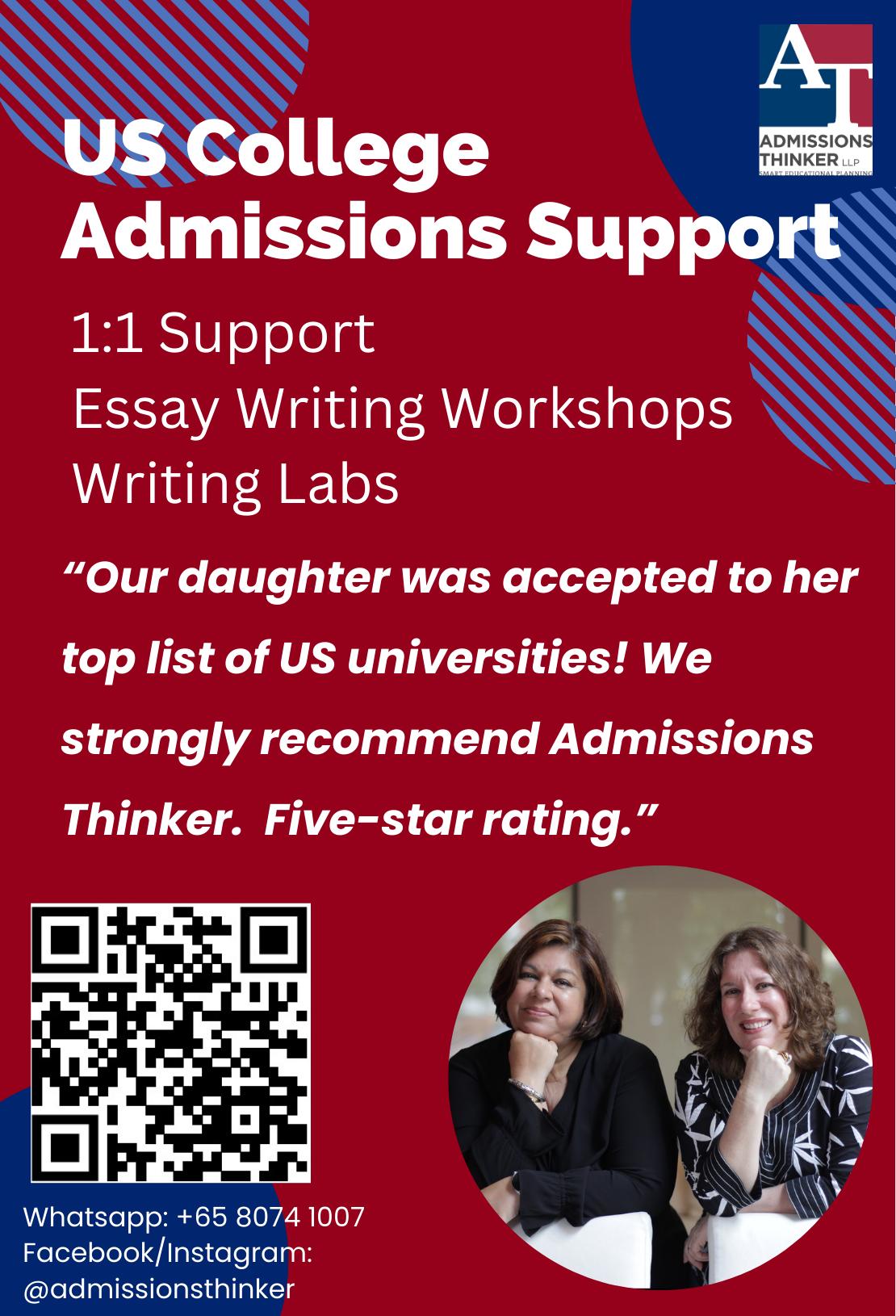

We had a great time watching this year’s Academy Awards, playing Oscar-related games, eating yummy breakfast treats, and sipping mimosas!

Congratulations to all our prize winners, and a special thanks to our hosts, Magical Moments by Arete and T&C Gemstones & Jewellery!






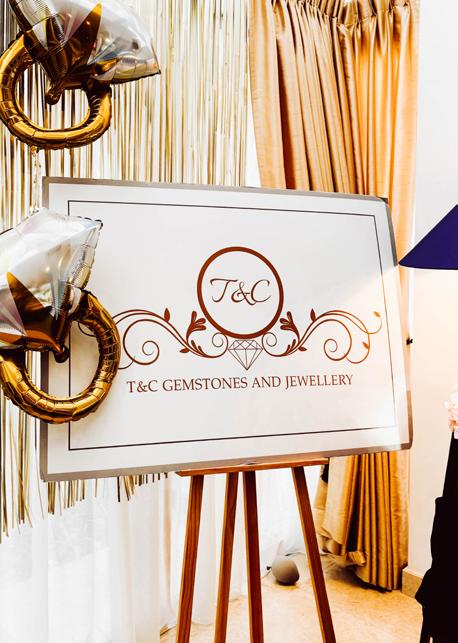






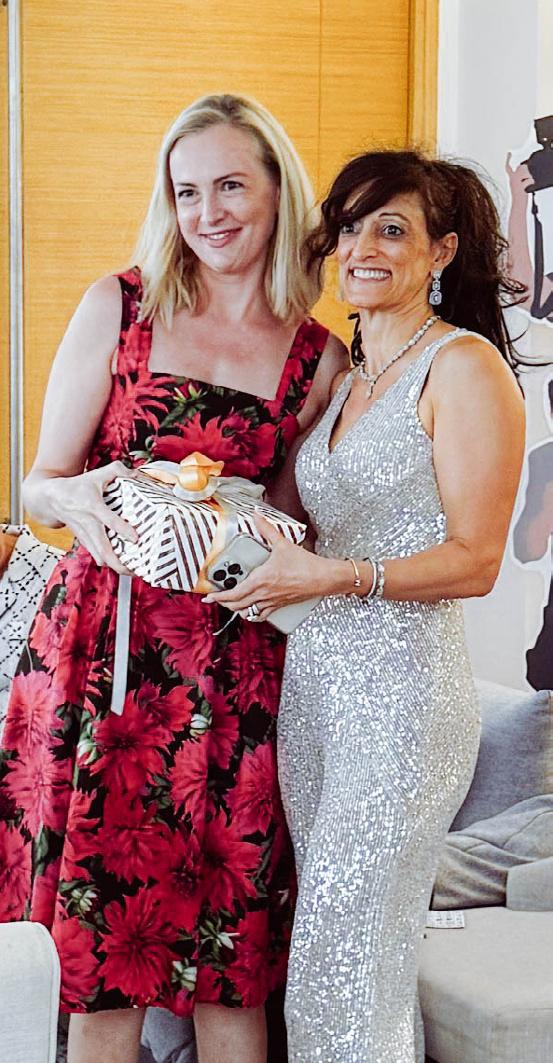

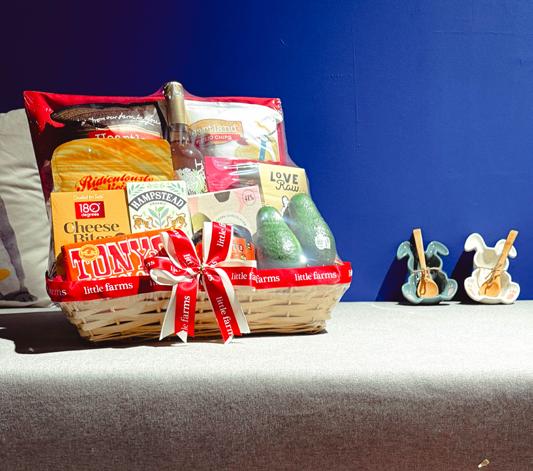

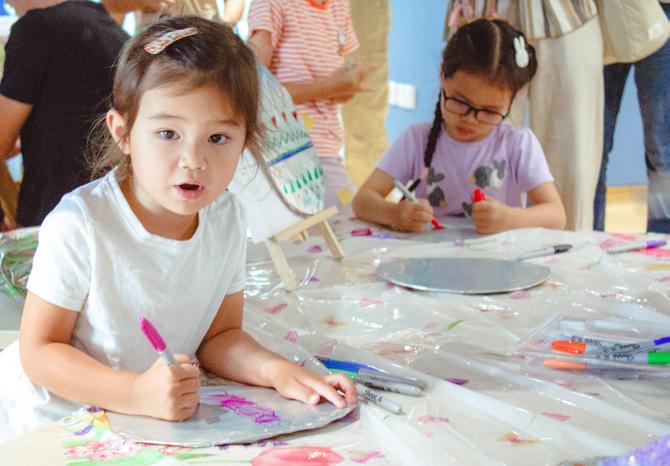
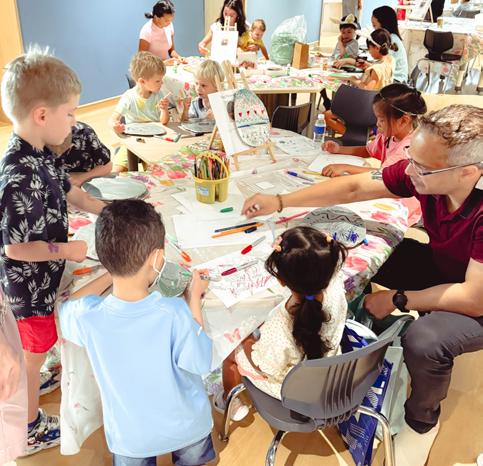
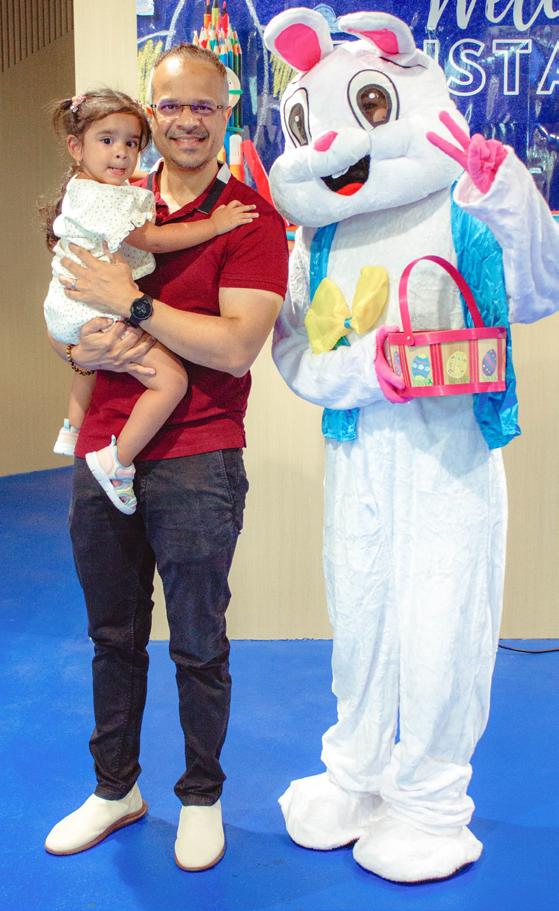
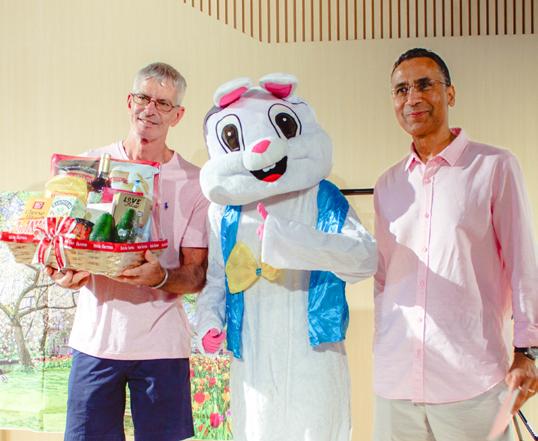
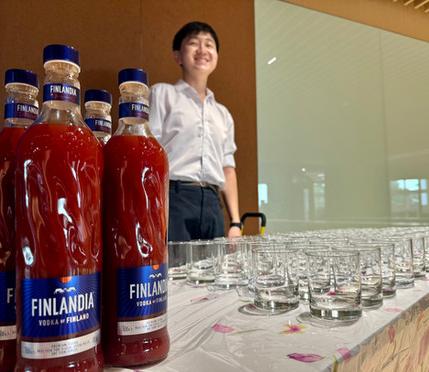



We had an amazing morning at XCL American Academy’s brand-new building! The kids had a great time crafting, eating, and, of course, hunting for eggs!
Special thanks to Little Farms for the pastries, strawberries, and gift hamper. We also want to thank Brown-Forman for the delicious Bloody Marys!
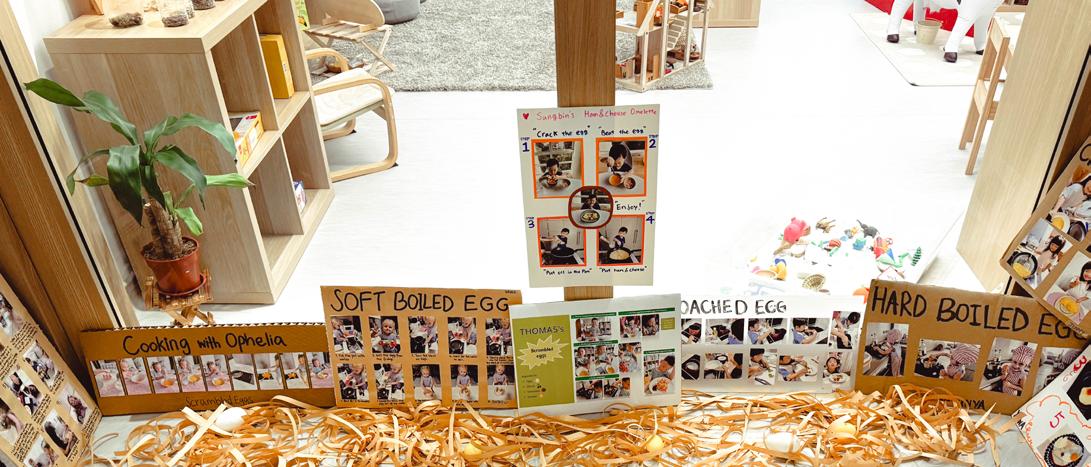
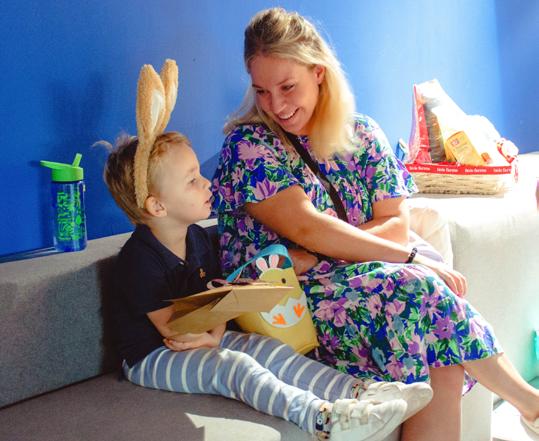
What a great way to kick off the Easter holidays!
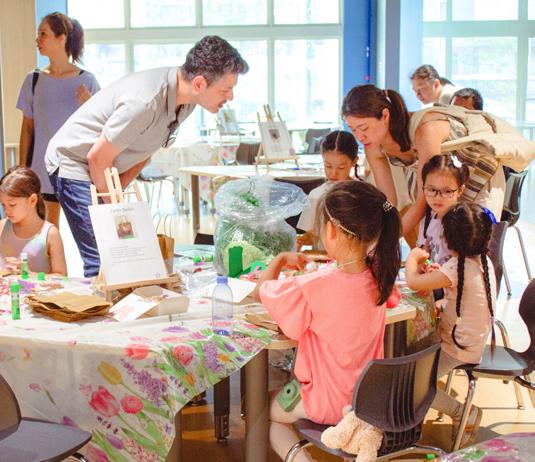


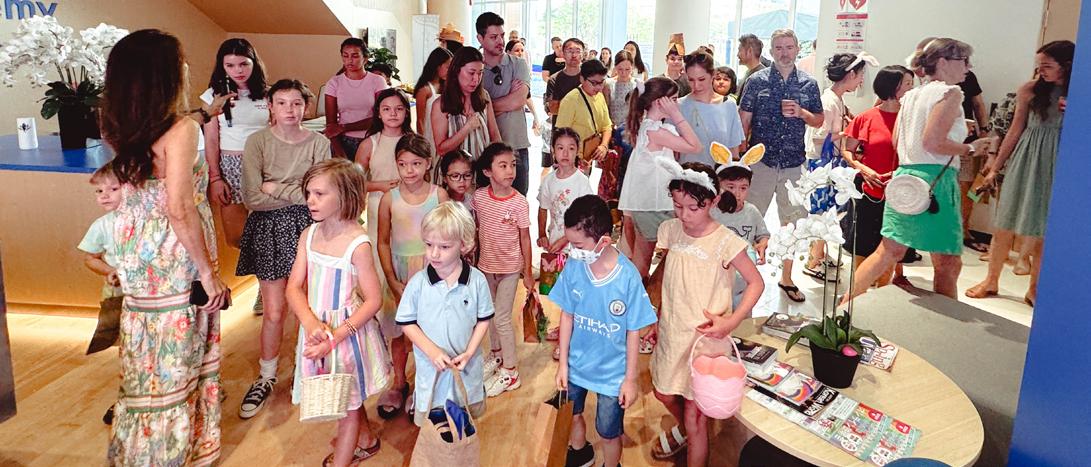
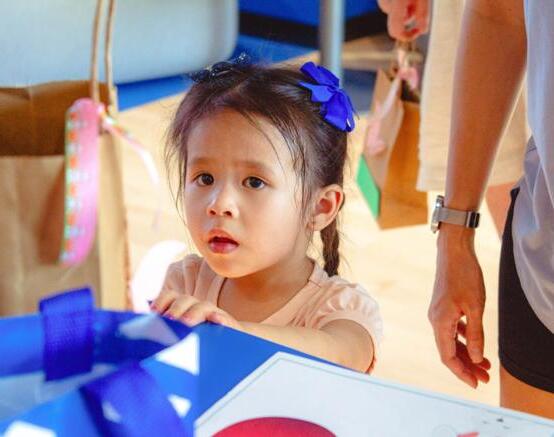
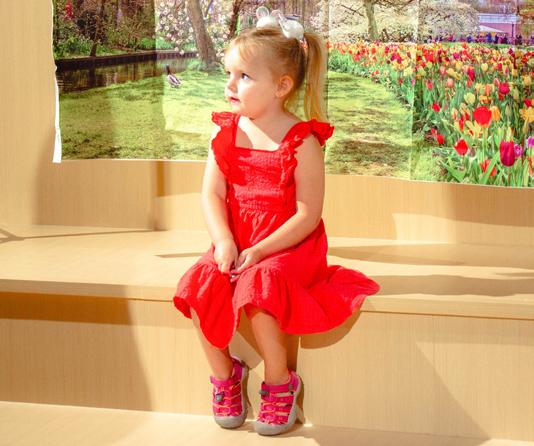
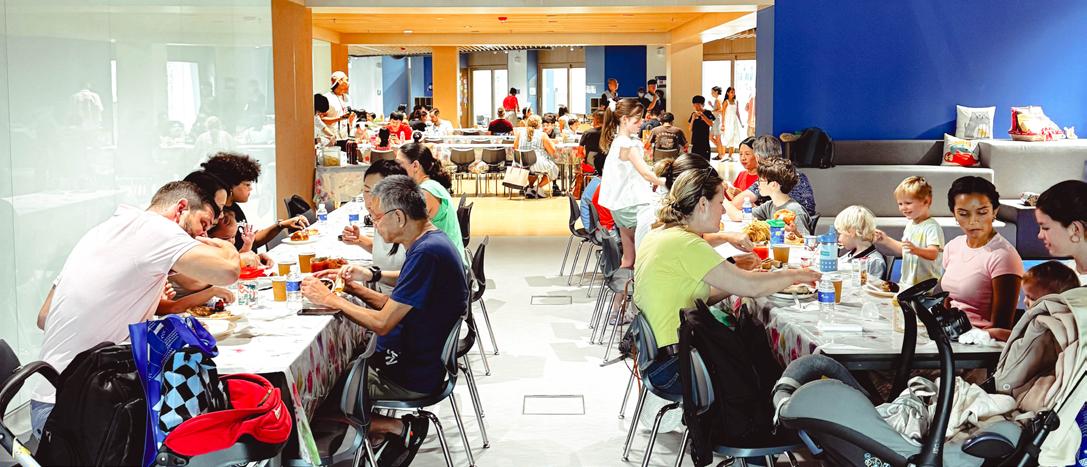



april 26, 2024






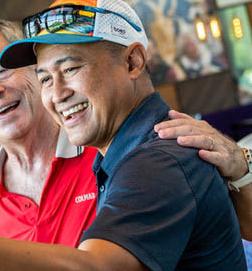


It was great to be back on the links again for the XCL American Academy 75th Ambassador’s Cup Golf Tournament presented by the American Association of Singapore. Laguna National Golf Resort did not disappoint, with a beautiful course under a blue sky. Following a magnificent day of golf, we enjoyed a cocktail hour courtesy of Woodford Reserve and enjoyed an awards ceremony and dinner. A huge thanks goes to XCL American Academy for being our title sponsor.
Thanks to Art Works Advisory, The American Club, and Woodford Reserve for food and beverages on the course and to Little Farms for snacks in the buggies. Special thanks to Coinbase and Oracle for their support of the tournament and to Allied for moving all of the things that go into putting on this incredible event!
Also a big thanks to all of our donors for the amazing prizes, especially United Airlines for two, roundtrip tickets to the US which were won by guessing how many tees were in a jar.
And of course, a huge thanks to Casey Mace, Chargé d’Affaires, for spending the day with us and to Chuan Campbell, our Golf Chair, for all he did to help organize the day.
Through our Buy the Pro hole and the sale of mulligans, we raised $5,785 for ART:DIS, an organization dedicated to creating learning and livelihood opportunities for persons with disabilities in the arts.
Congratulations to our winners:



First Place
Chris Emslie, Heather Emslie, John Heming, Sophie Yeung
Second Place
Kinsey Cotton, Micaiah Meuer, Mike Sharpe, Danny Van
Third Place
Andre Huber, Ernst Huber, Ryan Huber, John Lim
Longest Drive: Andre Huber
Nearest to the Pin: Arran Huddleston, Peter Lewchanin, Warren Kim, Dato Sri Edwin Tan
Nearest to the Line: Charles Wester
Guess How Many Tees: Henry Nguyen
For additional photos, click here
Thank you!


















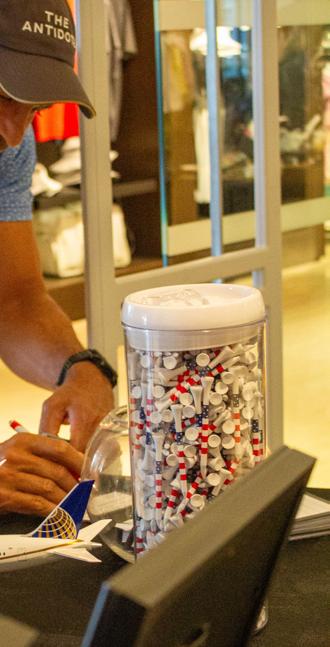






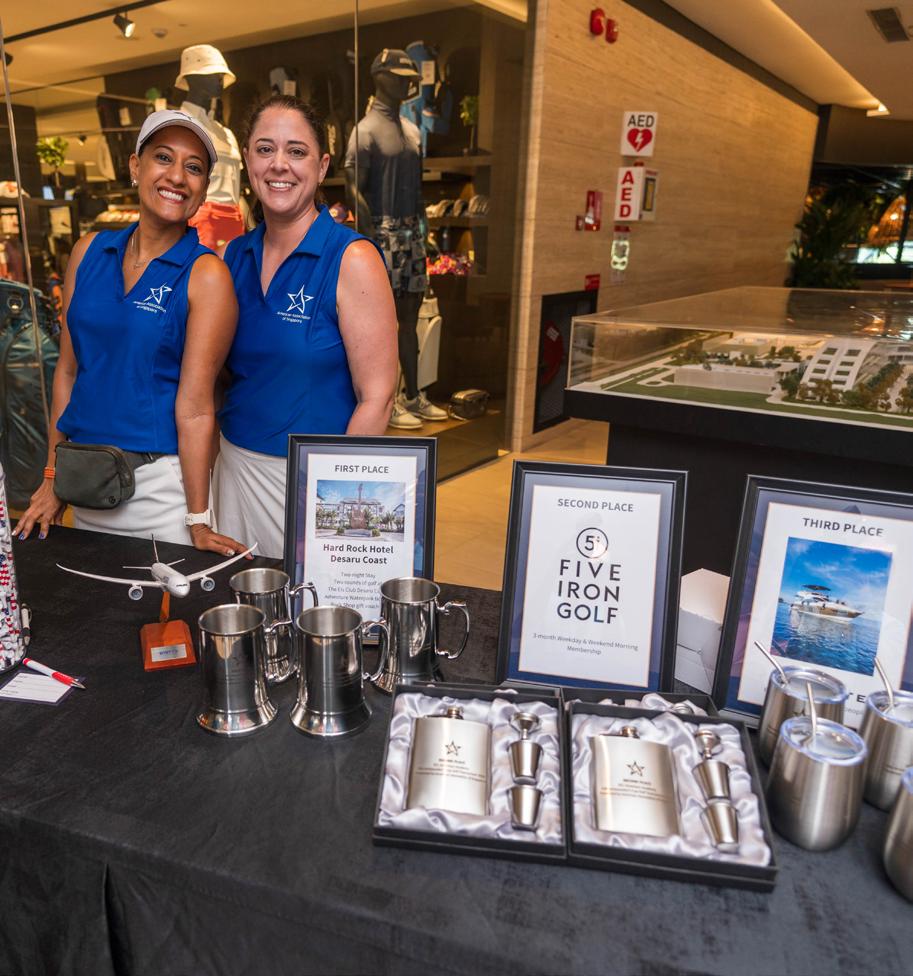








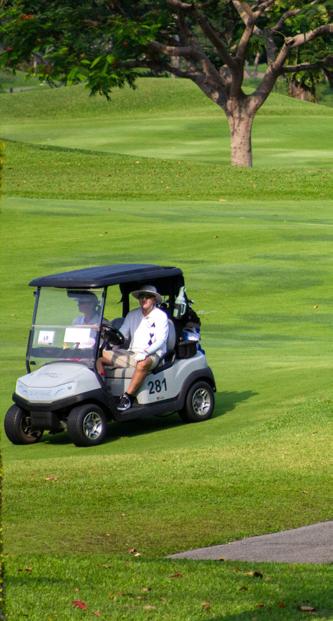




















 By Ruiheng Fu, BSA Troop 10B
By Ruiheng Fu, BSA Troop 10B
Recently, I attended Founder’s Day, an event where scouts worldwide commemorate the birthday of the founder of scouting, Lord BadenPowell. The event was bustling with an array of people. Despite the packed stadium,I found immense pleasure in the experience.Before the activities kicked off, I ventured solo into the throngs and encountered Scouts from various corners of the globe. Discovering the diversity of Scout programs worldwide and discerning the contrasts between theirs and ours proved truly captivating.
The most prominent presence at the event was the Boy Scouts of Singapore, easily recognizable by their distinctive blue shirts. Their Scout laws and oaths differed notably from ours, particularly in their terminology, referring to their oath as the Scout Promise. Upon stepping out of the taxi, the sight of numerous buses ferrying Singaporean Scouts reaffirmed my arrival at the correct venue. However, some Scoutmasters were also schoolteachers, so they could not have personal contact with non-related students. Thus, my sole source of information was through email, making it challenging to determine where my troop should gather. Fortunately, the Singaporean Scoutmaster proved immensely helpful, guiding me on their troop's whereabouts and checking in with me multiple times.




This event served to deepen the bonds of friendship among us. Before the official commencement, we were granted early entry. The Scoutmaster kindly distributed snacks and drinks, creating a relaxed environment conducive to conversation. This initiative fostered a sense of camaraderie, transcending national boundaries and strengthening our connections.
The focal points of the event were the formation of our Scout logo and the introduction of President Tharman as the new Chief Scout of Singapore. We were arranged into a section shape for the formation and instructed to remain in place for half an hour. During this time, a Scout leader delivered a speech from the podium. Following this, we took a group photograph with other Singaporean troops, discussed our differences, and had the honor of meeting the president.
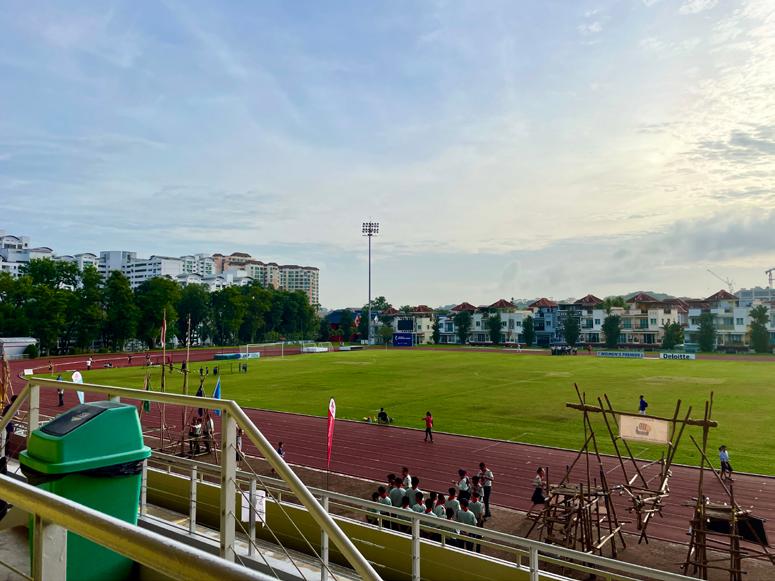


As I departed from the venue, carrying with me memories of laughter, learning, and newfound friendships, I knew that the spirit of Scouting would continue to inspire me on my journey ahead. Until we meet again on the Scouting trail, I carry the lessons learned and the bonds forged at Founder’s Day in my heart.








 Straits Times PHOTO: SHINTARO
Straits Times PHOTO: SHINTARO







Eight Cadette, Senior, and Ambassador-level Girl Scouts teams raced around Singapore in April in our annual Singapore Scurry. Using the MRT, buses, and their best puzzle-solving skills, they went through 12 challenge checkpoints in three areas of Singapore. From pouring teh tarik properly to finding clues in murals, statues, street signs, and perfume scents, the girls had a fantastic race day, Girl Scout style! Teams earned points by completing the challenges, with additional points awarded for the teams to finish the fastest. Winners will be announced at the Girl Scouts closing ceremony in mid-May. We’re excited to find out which team won!






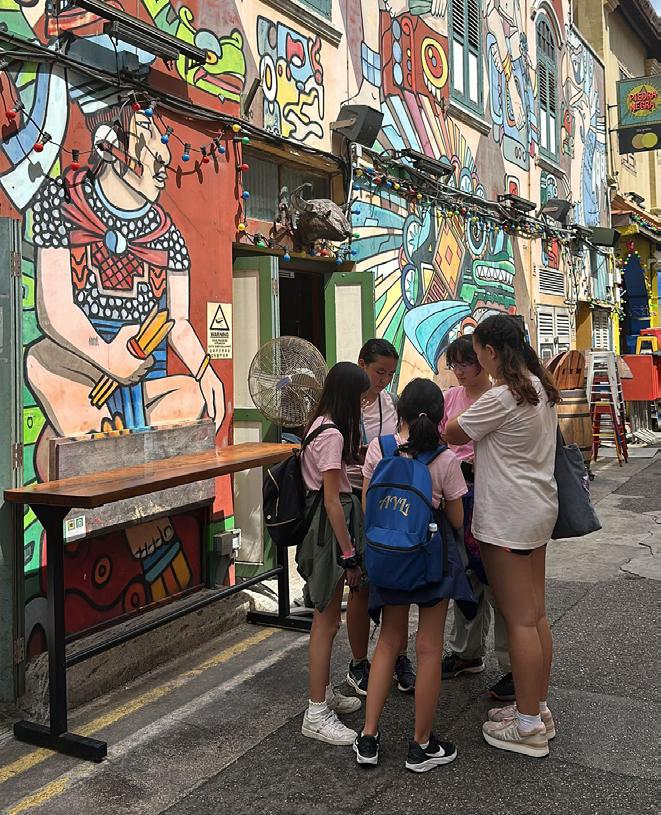





















 By Talia Brown, BSA Troop 1010G
By Talia Brown, BSA Troop 1010G
Scouts BSA has played an important role in educating kids worldwide about important life skills. Through my involvement in Scouts BSA in Singapore, I have learned skills and techniques for camping, hiking, and everyday life. For example, I have improved my ability to make friends and communicate across cultures, which is important for helping to avoid misunderstandings and confusing or offending people of different cultures.
Though being a Scout doesn't mean you always go on campouts, they are great opportunities to practice the skills we’ve learned and work on merit badges and rank advancements. A great place to make significant progress in rank advancement is the Far East Council Trilogy Camp, which is held every summer. Last year, I went to the Camp Nepal Trilogy Camp with my dad.
Camp Nepal was a massive team effort by Scouts from all over the world, not just Singapore. There were people from the US, China, Africa, India, Nepal, Thailand, and many others. It was astonishing how many people gathered from so many places. I met many Scouts from different cultural backgrounds and had the chance to learn about Nepal’s strong Scouting culture. Scouting is a community that anyone can participate in. Wherever you're from, whether you want to go hiking or earn merit badges, Scouting is for you.
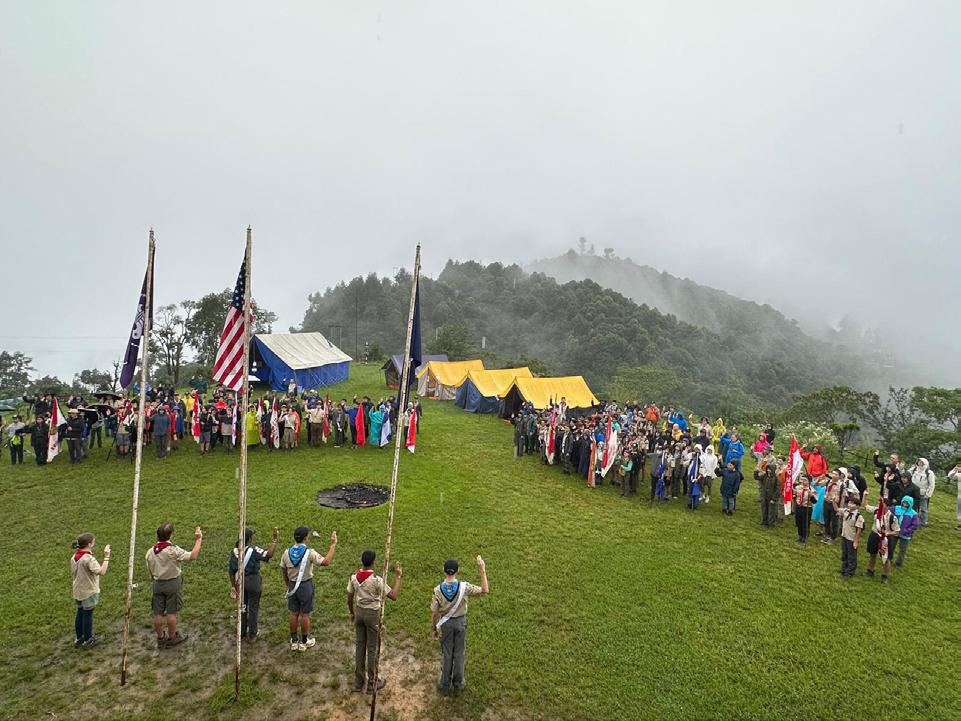




A skill I learned in Nepal was Pioneering. We made a makeshift shelter from scratch. This was something that I had only heard about and seen people do on TV but never actually done myself. I mastered the skills of Pioneering, and now I can do some things from memory. It's a unique skill I wouldn't have learned how to do without Scouts. Also, I got to collaborate with many peers I had never met before. Nepal was truly a fun and unique experience.
One other interesting challenge in Nepal was a competition for tying knots. I didn't win any prizes for it because I'm not the best at tying knots, and one of the prizes was for doing it with your eyes closed and under a certain amount of time, but I did master tying several new knots. One other skill I learned was First Aid. I learned how to carry an injured person safely in case of an emergency. All these skills are helping me to become a better Scout. After all, the Scout motto is,
“Be Prepared!”
Talia is the Assistant Patrol Leader for the Eagle Patrol


Scouting in Singapore is helping me become a well-rounded person. In a small, densely populated country with many large buildings, roads, trains, and other manmade structures, it can be easy to forget that nature exists outside. Scouting helps me be a balanced person who can care for myself in the wild if I ever need to.



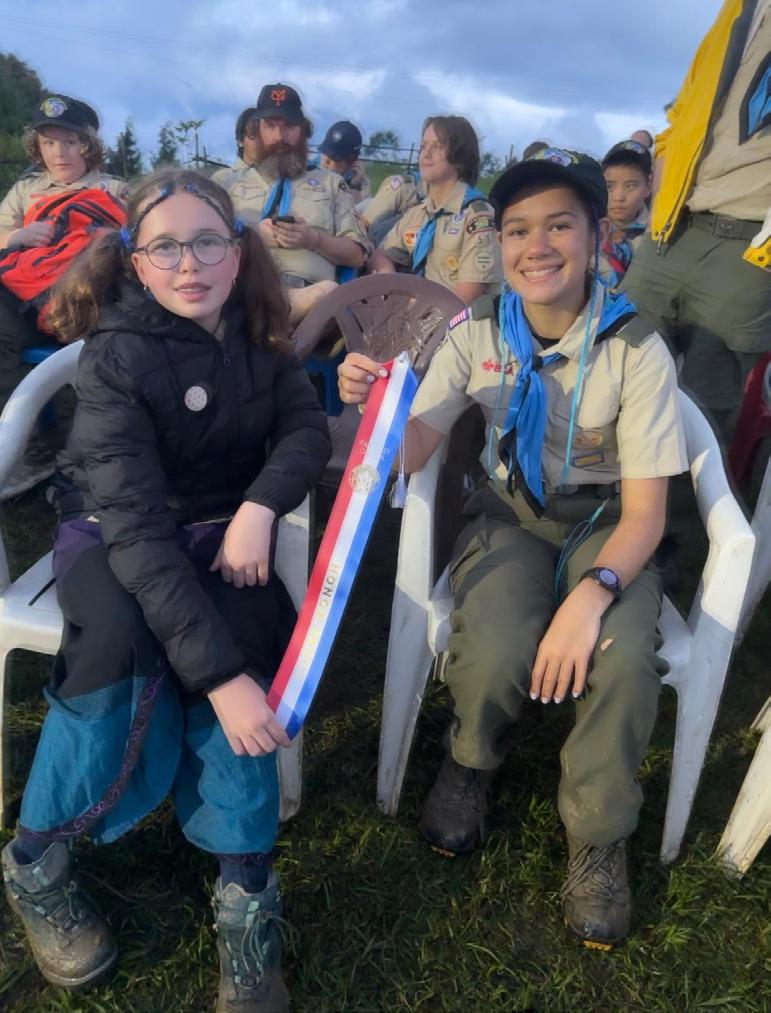













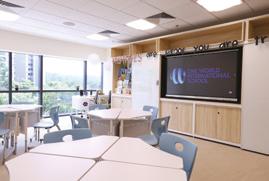


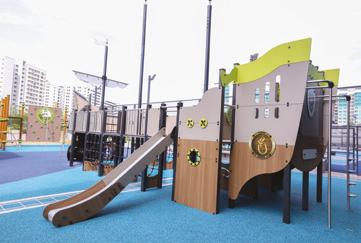
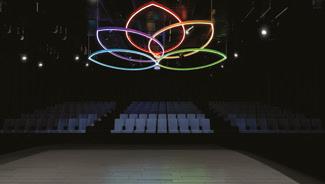
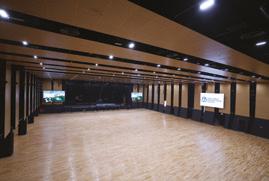








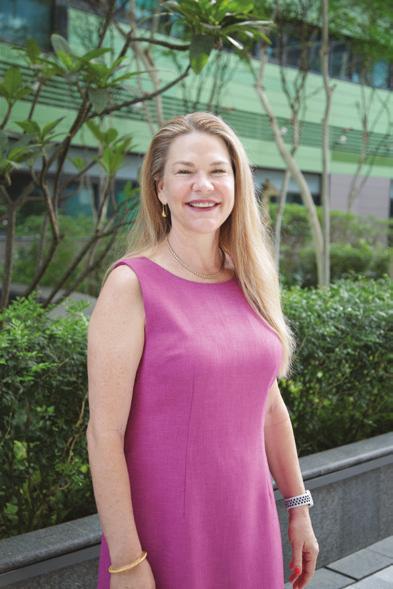

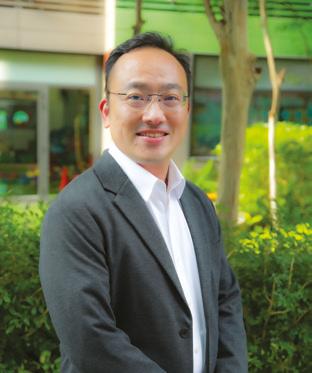






















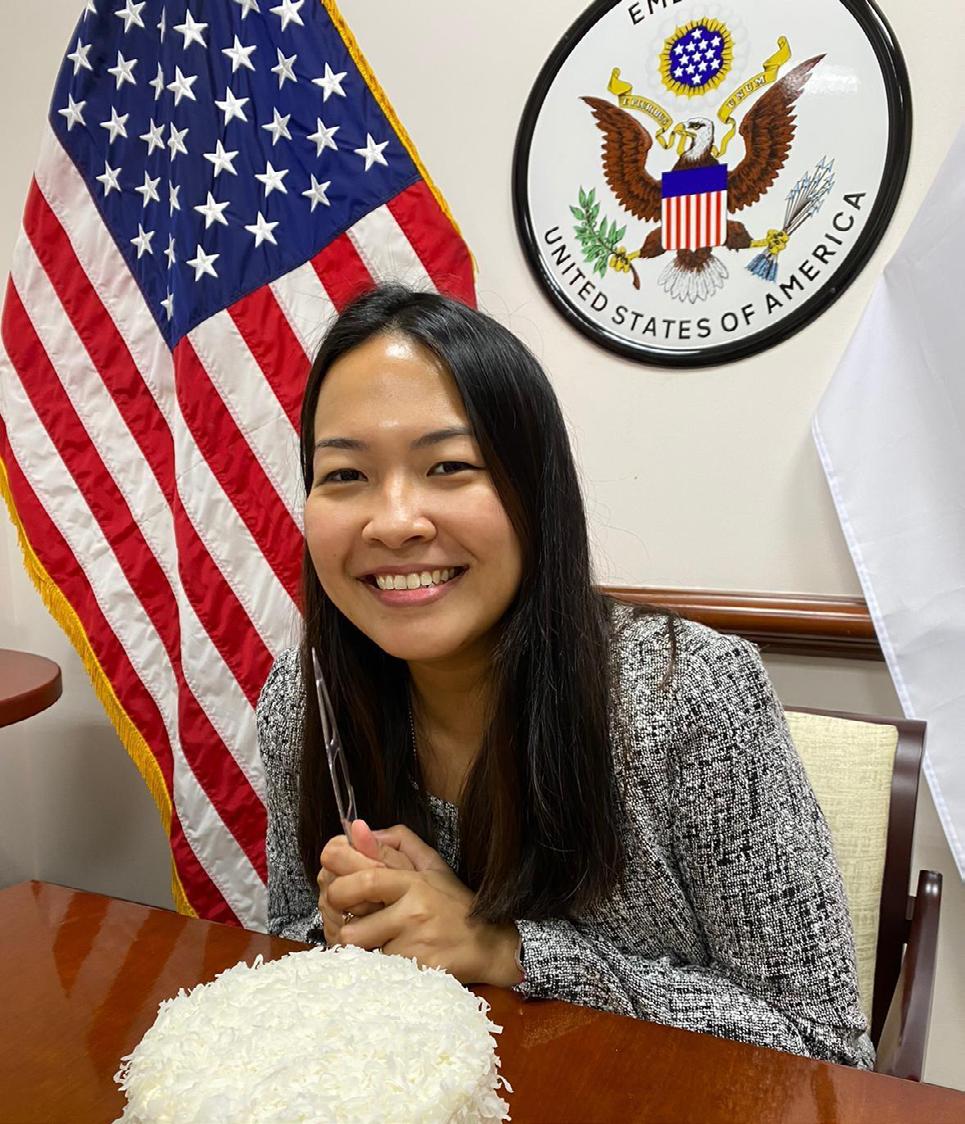

Tessa’s journey began straight out of college when she joined the Embassy as the Alumni Coordinator—a role that allowed her to connect with participants of Embassysponsored exchange programs who come from all walks of life and from diverse backgrounds and cultures. It was here that she discovered how much she enjoys forging meaningful relationships and building bridges of understanding between the people and communities of Singapore and the United States.

Through her work, Tessa has had the opportunity to meet big personalities in the political arena, including luminaries such as John Kerry and Kamala Harris. These encounters not only enriched her understanding of global affairs, but also solidified her belief in the power of diplomacy to foster meaningful dialogue and effect positive change on a global scale. Fueled by her passion for contributing towards a more peaceful and inter-connected world, Tessa decided to pursue postgraduate studies at the prestigious Lee Kuan Yew School of Public Policy, where she honed her skills, expanded her knowledge, and gained invaluable insights into the intricacies of governance and diplomacy.
Upon completing her postgraduate studies, Tessa returned to the Embassy, this time as a Public Engagement Specialist. In this role, she plays a pivotal role in building relationships with community and business leaders, academics, and government officials. Part of her work also includes managing the Fulbright Program, the world’s largest and most diverse international educational exchange program that is devoted to increasing mutual understanding between the people of the United States and the people of other countries. Tessa is grateful that her Fulbright portfolio enables her to meaningfully shape the futures of students, scholars and teachers every day.
This year, Tessa embarked on another life-changing journey—motherhood. Balancing the demands of her career with the joys and challenges of motherhood, Tessa embodies the spirit of resilience and determination that defines so many women around the world.

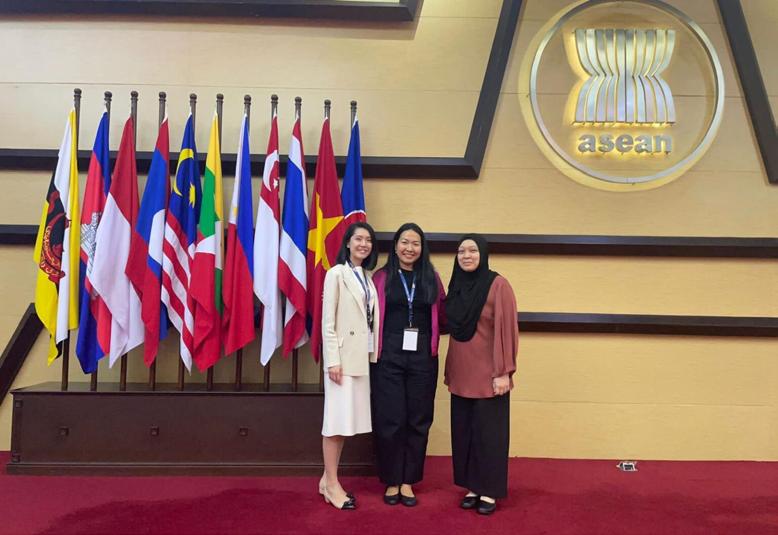
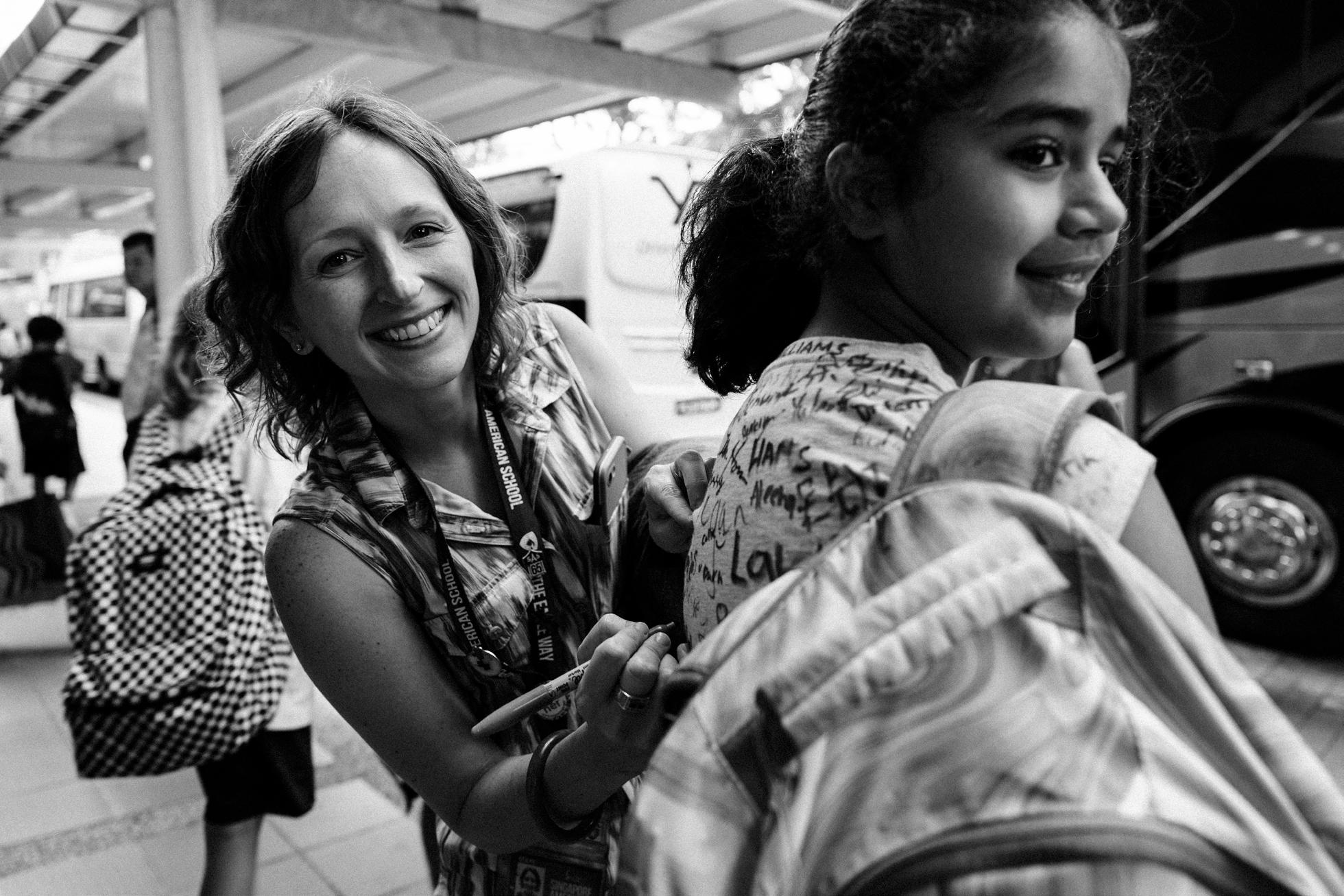
Ever found yourself wide awake at 2:30 in the morning, grappling with an IKEA bookshelf in a new, unfurnished apartment, and questioning whether this foreign place is truly home? If so, you're not alone. Many expatriates, like myself, have experienced the whirlwind of emotions accompanying international relocation.
Some may be embarking on their first international posting or deployment, with a handful needing to resort to Google Maps to pinpoint their destination. Others are seasoned veterans, having traversed various postings with their families. Regardless of experience, I’d like to share some questions and answers to help parents transition into a new culture, school, and country. "Achieving a balance between career commitments and family needs is essential."
1. When to Tell Kids About the Move
Informing children about an upcoming move should happen once it's reasonably sure. Children, mirroring parental emotions, may display a range of reactions, from excitement to anxiety. It's crucial to help them process these feelings early on, as anxiety about fitting into a new school community often emerges before the move.
2.
Ideally, transitioning at the start of a school year offers children ample support from schools that are used to accommodating newcomers. Finishing the school year before moving is highly advisable. Kids and adults need closure, and end-of-year celebrations aid in this process.
Researching the new school, location, and culture online can ease the transition. Visual aids such as videos and photos help create a context for the new environment.
4. School Records
New schools typically require academic records spanning the past three years. Honest disclosure about a child's educational needs is crucial for their future success.
5. Academic Struggles
Initial academic challenges are common due to variations in academic standards between countries. Patience and communication with teachers are key to understanding and addressing these challenges.
Maintaining a home base during extended school breaks can foster a sense of stability, though it may not be financially feasible for everyone. Decisions should be made thoughtfully, considering the potential impact on family connectedness and community. Often, international families long for a tangible anchor to real estate to weather the transitions.
Promising
Offering to revisit the previous home during breaks can reassure children, but may also prolong the adjustment period. Parental decisions should consider the individual needs and coping mechanisms of their children. I’d advise against returning to your previous post for a “visit” if your child is struggling with the transition process. This often has the opposite effect of promoting closure.
8. Addressing Social Engagement
Children often seek familiarity in new environments, and disruptions to routine can trigger various emotional responses. Establishing routines and open communication with teachers and counselors are vital for supporting children through the adjustment period.
as children integrate into their new environment, they will find balance and recognize the value of old and new connections.
Returning home after a fulfilling year abroad can be disheartening when others fail to grasp the significance of international experiences. Families can share their adventures through various means to bridge this gap, fostering understanding and connections with loved ones back home.
12. Supporting Children Amidst Friendships Changes
Amidst the flux of international education, it's crucial to recognize the emotional toll on children who must repeatedly form new friendships. Parents play a vital role in offering support and understanding during these transitions.

Occasionally, children resist adapting to new environments, posing challenges for the family. When faced with such resistance, parents must honestly assess if returning to the previous location is feasible. It's crucial to avoid dangling false hopes and address conflicts headon, emphasizing that family decisions sometimes require compromise.
10. Navigating Old and New Friendships
In today's digital era, maintaining connections with old friends via various social media channels is common, providing vital support during transitions. Despite challenges in forming new relationships, it is advisable not to restrict communication with familiar peers. Over time,
13. Redefining "Home" After Overseas Experience
Returning to one’s home country after years abroad can evoke mixed emotions, especially for children who consider their current location home. Families must acknowledge that home transcends geographical boundaries, embracing a broader definition shaped by global experiences.
14. Addressing Lack of Company Support
Some international companies neglect adequate support for families relocating abroad, prioritizing work demands over family integration. Employees must advocate for comprehensive support services and consider family well-being before accepting international assignments.
15. Balancing Work and Family Priorities
Achieving a balance between career commitments and family needs is essential. While work demands may be intense, prioritizing family well-being is paramount. Individuals and couples must make conscious choices that align with their family's needs and values.
International moves bring inevitable challenges; understanding the transitional stages and proactively addressing children's needs can help ease the process and foster resilience.
Welcome to the Head Space column, where we’ll discuss all matters related to mental health and how it relates to our lives here in Singapore. By Andrea McKenna Brankin.
For those of us who live here, we know how amazing Singapore is! But let’s face it, a lot of our American friends just don’t buy it. They can’t seem to imagine a country with so much abundance and so little turmoil. I’ve been here for 12 years and have been around the block with all the uncomfortable conversations with people from back home. So, if you’re new to Singapore or can just commiserate with me as a veteran expat, take a look at some discussion pitfalls and some possible more positive redirects about living in Singapore as an American expat. As many of us head home for the summer, these redirects might come in really handy!
Why in Head Space? I have found these conversations to be not only stressful, but downright unpleasant. It’s good to be prepared to avoid misunderstandings with non-expats and not let it get to the point where it affects your mental health and relationships.
Many of our American friends just can’t imagine a country without these three scourges, but there are a few reasons these things are well managed here. There is the death penalty in place and enforced for drugs, murder, and gun possession. The landing card for Singapore visitors clearly states that these crimes or possessions are harshly cracked down on, including the death penalty.
Moreover, there are no gun shops. There is no history of hunting or defending one’s property. Our American compatriots often can hardly imagine this. Singapore hasn’t been attacked since World War II, and even then, they were defended by the British and Australians, who had the military force, not Singapore. It’s simply not a gun culture. They don’t make them, sell them, or use them.
In terms of complying with laws, I find that everyone does so for the greater good of society, not necessarily to avoid punishment. They are more committed than many other countries to having a safe society.
Instead, say this:
A more palatable spin on this heavy topic might be to simply say that there is “low crime because laws are strictly enforced.” I find that leaving out the part about the death penalty also avoids some unpleasant comments about the human rights issue there, another hot-button issue for Americans.
We have no car.
Almost everyone I’ve ever talked to is almost enraged when I say I don’t drive and that we don’t have a car. They claim it is a life skill to drive. Not having a car is unimaginable in a large country like the United States, where there are highways among byways among side streets, backstreets, and country roads.
As we know here, the Certificate of Entitlement just to buy a car is nearly $100,000, depending on which kind of card you get (the engine and output). Then, the car must be ordered months in advance and shipped. Indeed, car dealerships are an American icon, and it’s hard for people outside the US to believe that there are not many here. (But if you want to see them, try Alexandra Road near IKEA!) Moreover, cars that cost $20,000 or less in the US might be more than $50,000 here. Nicer brands like BMW or Mercedes (rather on the low end here) are potentially $100,000 over here.
So, obviously, it can be too expensive to buy or even lease a car here, though leasing is a cheaper option. Still, I’ve seen lots of expenses go toward the leased car in terms of operation costs, insurance, gas, and parking in a major city.
Instead, say this:
Singapore has world-class public transportation that is extremely safe, clean, and convenient. With the expansion going on now and all the new MRT stations opening this year, it’s getting easier and easier to get around. It can
still be tough to convince people that public transit is safe and clean, but just tell them that there are hefty fines of $500 or more for litter and having food and drinks on trains and buses. Singapore is a “fine” city, full stop.
We have a maid.
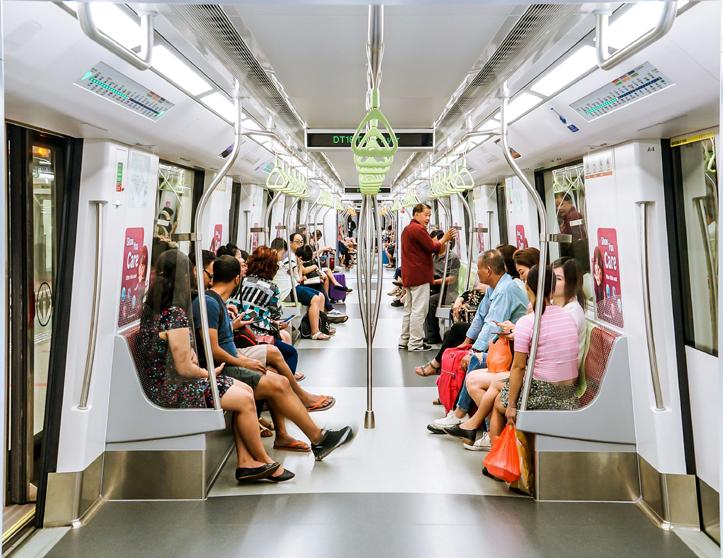
Having house help is a given here, as it’s part of the culture and can really help expat families who don’t have any family around like grandparents, aunts or uncles to help with kids. Yes, it is rather a luxury many take advantage of, but there are some good reasons for that.
For myself, I moved here pregnant and had my daughter here. My husband was building a financial services company, and had I not had a maid, I never would have seen my husband. Having Tita Rose in the house allowed me to visit him during the day, have lunch, or meet for dinner when he was working late.
Furthermore, I had no family around to help me with my baby. Rose knew all about raising babies, toddlers, and growing kids. She knew about patting the bum, which foods to eat, how to organize naps and playtimes, and was just an irreplaceable right hand for me while I built our expat life alone out there.
Actually, just don’t bring up the word “maid” at all. Helper doesn’t mean much at home either, so I’ve had the most success with calling Tita Rose our housekeeper and/or nanny. And whatever you do, don’t say your maid lives outside in the bomb shelter! Say they live in a separate wing of the house. Believe me, you don’t want to have that conversation. For my family, we give our helper her own room within our condo, so she has air con and a decent bathroom. I’m aware this is not the norm.
Groceries are really expensive here!
Again, it’s something most Americans can’t understand. The price of beef, milk, cheese, cauliflower, Clorox, Tide, etc., is outrageous compared to Costco or the local US grocery store.
Instead, say this:
Singapore has expensive goods because it doesn’t have large swaths of farmland for dairy, beef, fruit, or vegetables. It also has very few factories, as goods manufacturing is not what this country is built on. As a small island, everything gets manufactured somewhere else and must be shipped here.
I can see Indonesia/Malaysia from my place.
This may sound like a funny one, as, of course, it was a major faux pas for former Vice Presidential candidate Sarah Palin, who said she could see Russia from her house. But it really is hard for people who have never been to this island to understand how very small it is and how very close it is to surrounding countries.
Instead, say this:

I usually have leaned on talking about being able to see the famous Marina Bay Sands, which is an iconic structure of Singapore that’s been blasted all over the world and the Internet. It’s just easier for non-expats to understand.
Wherever you are in your expat journey, I hope you will continue to enjoy all the benefits and learn how to manage the people in your life who just will never understand Singapore until they visit.


 By Tiara L. Giles
By Tiara L. Giles
I've been away from America for almost seven years now. I made the huge leap moving to South Korea with barely any money to my name. I ended an “almost” marriage and started a new single life abroad. Living in South Korea for six years was a lot of fun, but it lacked one key element: time.
I didn't feel I had time to go back and visit every single person I left behind in the States. Nor did I really care, to be honest. I was so focused on making it as a longterm foreigner that I had to sacrifice something. I barely slept because I wanted to socialize and take as many language classes as possible. I can’t even count how often I went on dates. Plus, working in Korea requires you to put in long work hours. I felt that if I wanted to make a long-lasting impact as an expat, I had to forego seeing my family and getting ample rest.
After moving to Singapore at age 28, I realized how different it is to live abroad in your early 20s versus your late 20s. In your early 20s, it's very easy to make friends. My requirement for making a good friend was pretty simple, and I made friends with almost anyone. These are the friendships that I like to call “survival
friendships.” I met these people initially because we all had one thing in common: expat life. I think we each felt lonely and wanted to quickly fill that void, so we made a group of friends and spent as much time as possible with each other. When it came to dating, many of us probably dated simply to have somebody around. The pro of this is that you end up seeing almost the entire country with your newfound friends. If you’re lucky, you might also become quite proficient in the local language. But eventually, you realize that you’re not actually compatible as friends or as a couple. Sometimes, these people might be a placeholder until a more suitable partner is found, or they’re simply a void filler. There could be any number of reasons, but your initial friendships are usually there for a season and don’t always last. Don't worry. You will still make some solid friends who will remain friends after leaving the country.
Now, let’s talk about you being a single expat in your late 20s. I have found living as a single woman abroad past the age of 28 to be rewarding, but also challenging. I have zero patience for the things I put up
with during my early days abroad, and I have a stronger and wider radar for these things. Besides, now that I know how to live alone, I actually crave time to myself which makes it even harder to make genuine and solid connections abroad.
I honestly have felt so frustrated trying to find community here in Singapore. People here are super friendly, but much like in Korea, they can seem very reserved. They are curious to know about me but won’t really ask to connect further. It’s difficult to tell if somebody is interested in dating me as the cues are different from what I became used to in South Korea.
I’ve had to learn entirely new communication styles as well. I looked for groups that included my culture to feel less lonely. I joined hobby groups. I frequented bars (due to my work hours being similar to theirs) and connected
with the staff. And if you’ve read my previous story in Living in Singapore, you know that I found solace in the weird hustle and bustle of Haji Lane.
After a year, I’ve finally accepted the fact that living in Singapore as a single woman is nothing like living single in South Korea. I finally have a few very solid friends and a solid partner, and I have finally been able to see my family. Singapore provides more free time. It allows me to grow and work towards my goal of work-life balance. If I had stayed stuck in the mindset of my early 20s of just trying to survive, I would've never found time to see my brother.
Living in Singapore has its own set of challenges. However, the rewards really do pay off.
For the drinkers For the cafe-goers For the hobbyist
Chandu Bar, Cat Bite Club, Neon Pigeon, or 28 Hong Kong St have different vibes with great drinks and a friendly atmosphere
Rumi the Poets Cup, Enchanted Cafe, Fieldnotes, or Moonchild. Some of these have great tastes, some have great vibes, and others offer comfort.
I've used the MindBody app to sign up for one-day dance classes at Converge Studios. I've had wonderful conversations with other hobbyists, too. You can definitely make some friends this way.
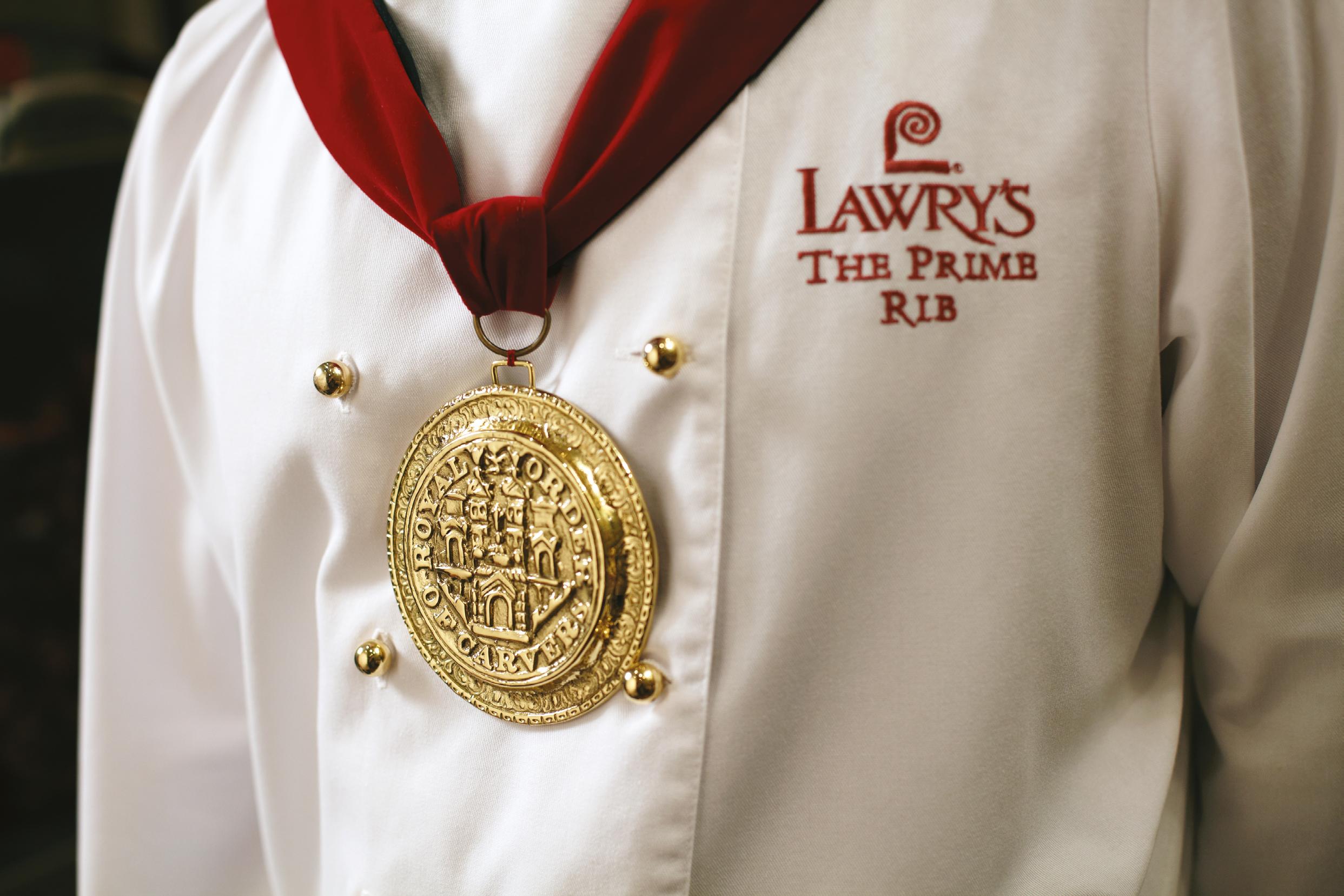
Lawry’s The Prime Rib is distinguished for serving the best American cuisine. Overlooking the streets of Orchard Road through floor-to-ceiling windows indulge in our Signature Prime Rib of Beef, aged up to 28 days to heighten tenderness and slow-roasted on beds of rock salt to ensure uniformly juicy and flavourful meat. It is then carved and served tableside from the Silver Cart, alongside the famous Spinning Bowl Salad.

My husband, Jason, began teaching at the Singapore American School in August, so last July, we packed up our lives, said goodbye to Chicago, our home of fifteen years, and moved our rising fourth and second graders to Singapore. We were all a little homesick in the beginning - some more than others, me most of all. (In my defense, our apartment was full of roaches. Also, in my defense, I have never gracefully adapted to new situations, and people rarely change drastically at 42.)
SAS organized many “Welcome to Singapore!” outings for the new hires and their families during those weeks in July before the school year began. We missed most of them because we were battling roaches and searching for a store that sold pens. We were generally exhausted, but one activity we DID sign up for was the Treetop Walk at MacRitchie Park. When I say “we,” I mean Jason, but in the spirit of our marital union, I am combining us into one entity that made this terrible mistake. When he told me he had signed us up, I wasn’t sure it was a good idea - but, at the very least, there would surely be fewer cockroaches in MacRitchie Park than in my apartment.
Things started badly. Jason either misread how long Google Maps said it would take us on the MRT, or we got off at the wrong stop because we ended up power walking (first in the wrong direction for a bit, and then frantically in the opposite direction). We got to the meeting point a few minutes late, and nobody was there. Jason tried to contact the group leader on his phone as we began sprinting into and out of the park on various trails, looking for our group. My kids saw a lizard and had the audacity to stop and marvel at it, causing Jason and me to shriek, “STOP LOOKING AT THINGS. WE WILL LOOK AT NATURE WHEN WE’VE FOUND EVERYBODY. YOU NEED TO RUN RIGHT NOW.”
After a more extended period of this than I cared for, we figured out we were at the wrong end of the park and would never reach the SAS group in time. They had

already delayed their start by about 20 minutes waiting for us, so we apologized and told them to go without us. We decided we would hike the Treetop Walk on our own from our location. So we started, Jason quietly stressing about the bad first impression he had made this morning with his new coworkers, me wondering how long it takes before you know you have dengue fever. The kids were already exhausted from all the sprinting we made them do before the hiking even started.
As soon as we were on our way, Caroline, our sevenyear-old, informed us that she was hungry. We told her we had lost too much time and didn’t want to be there in the hottest part of the day, so we would wait until we got to the Treetop Walk to have our snack. She accepted this in stride and returned to looking at the birds and turtles. Just kidding, she whined the entire way there that she was starving, stopping only briefly when we ran into a monkey on the path, and her older brother told her that if she showed her teeth, it would attack her. She shut her mouth and didn’t open it again until the monkey was gone.
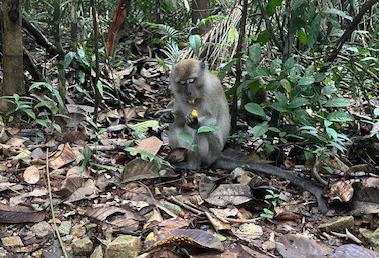
The problem with doing an activity your partner planned is that they are the ones who, it is assumed, did the research, and the problem with that assumption is that it is rarely true. I thought this would be a short hike because it was billed as a family activity, and we brought our children. And, I must point out, our children are ideal for this sort of thing. They are car-less city children. We walked everywhere in Chicago, in all weather. They are good walkers, but they cannot walk all day. The Treetop Walk, it turns out, is not right near the entrance we took into the park. It is on the other side of the island. It is possibly in Malaysia. Until we reached it, I started to think that it was a mythical place inside us all and not an actual location one could reach on this side of the veil. Jason and I kept stumbling ever onward, drenched in sweat, googling the conversion from kilometers to miles at every signpost we came to as beautiful family memories were made to the rhythm of our dulcet voices calling out into the jungle, “YES, I KNOW you’re tired,” and “No, I have not MAGICALLY FIGURED OUT how much farther it is since the last time you asked,” and “We’re trying to all have a good time together. STOP WHINING.”
Eventually, mercifully, we finally reached the Treetop Walk, where famished Caroline had been promised a snack. And right there at the entrance was a giant sign saying no eating was allowed. And that was the last straw for Caroline. She wailed her way across the bridge through the trees. She looked at no views; she posed for no pictures. The people around us thought she was afraid of being high up, and I didn’t correct them because I had forgotten how to communicate with another human being without snapping. Her older brother, Ben, doesn’t like heights, so he actually WAS afraid to walk across the bridge, which was Jason’s last straw. After walking, sweating, and arguing for so long to get to this place, none of us soaked it in or appreciated it when we were there. We walked swiftly across the Treetop Walk and back onto the trail, retracing our steps to get back to our entry point and out of MacRitchie Park as quickly as possible. Which – I can assure you – was not fast.
Of all the things we’ve done as a family in Singapore since moving here last summer, none have stuck with us as much as that forced march through MacRitchie Park. Just say the words “MacRitchie Park” to any member of my family, and you will get a visceral reaction. It was a terrible day, but it has made a hilarious memory. And, in the park’s defense, we’ve had several friends do the hike to the Treetop Walk in the months since we limped through it, and they all had a fabulous time - but they didn’t take their kids.
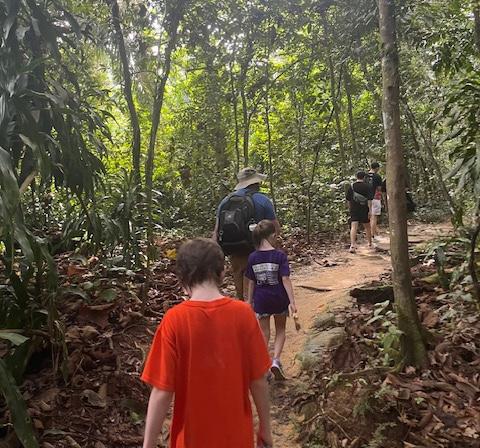
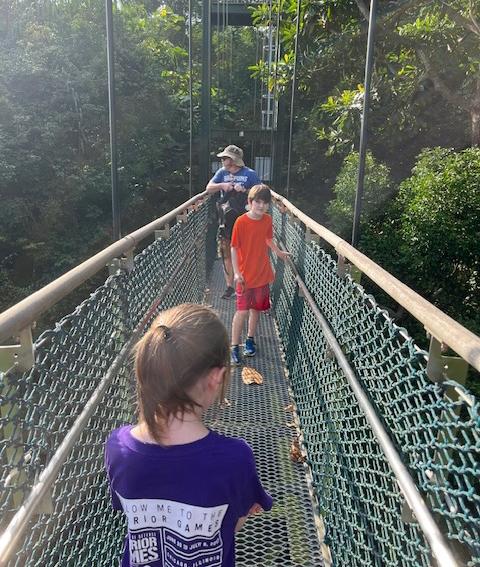
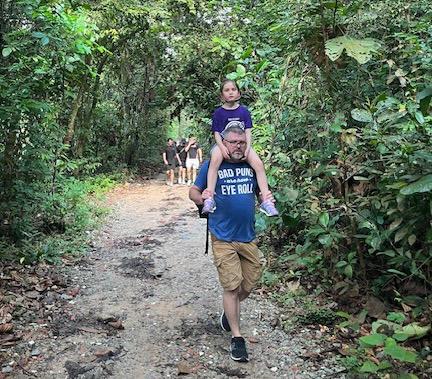
There is no shortage of choices when it comes to sending your kids to a summer camp in Singapore! No matter what your child is interested in, chances are there is a camp out there for them. Here is but a small selection of programs for kids ages five and up.
Outdoor School Singapore offers the Tall Timber Holiday Camp, which gives children a chance to learn about trees and their importance to humans. They will also learn how to build a shelter to protect themselves from the elements using ropes and tying knots.
The Tall Timber Holiday Camp runs throughout June and July and is one of many camps Outdoor School Singapore offers. Get more details here.
SG Basketball’s June Holiday camp can introduce kids to the fundamentals of basketball or take their skills to the next level. The camp is held at both Chai Chee and Turf City throughout June. Get more details here
Wildlings outdoor adventure Camps are guided by the interests of the children themselves. They provide a wide variety of experiences for kids to choose from, never forcing participation. The highly skilled instructors are flexible and plan experiences based on the interests of their unique group of children. Wildlings is located in Dempsey Hill. Find more information here
UFIT offers a range of sports camps for kids, from rugby to tennis or pickleball, and Sports for Life camps. In the Sports for Life camp, kids will engage in various sports such as football, rugby, cricket, tennis, and lacrosse, getting a little bit of everything. Find more details here

If gymnastics, tumbling, or trampolines are what your child loves, The Yard offers both recreational and competitive camps. Themes for the weeks include Hawaiian aloha, safari, circus, and superhero, sure to burn off lots of extra energy! Find out more here.
Crafted by former IB international school leaders, Camp GungHo is bursting with excitement, featuring thrilling games, creative arts and crafts, and unforgettable excursions to Adventure Cove Water Park, Ultra Golf, Hydrodash, and Nestopia climbing adventure playground. Or, join Get GungHo FC for an intensive week of soccer camp. Find out more here

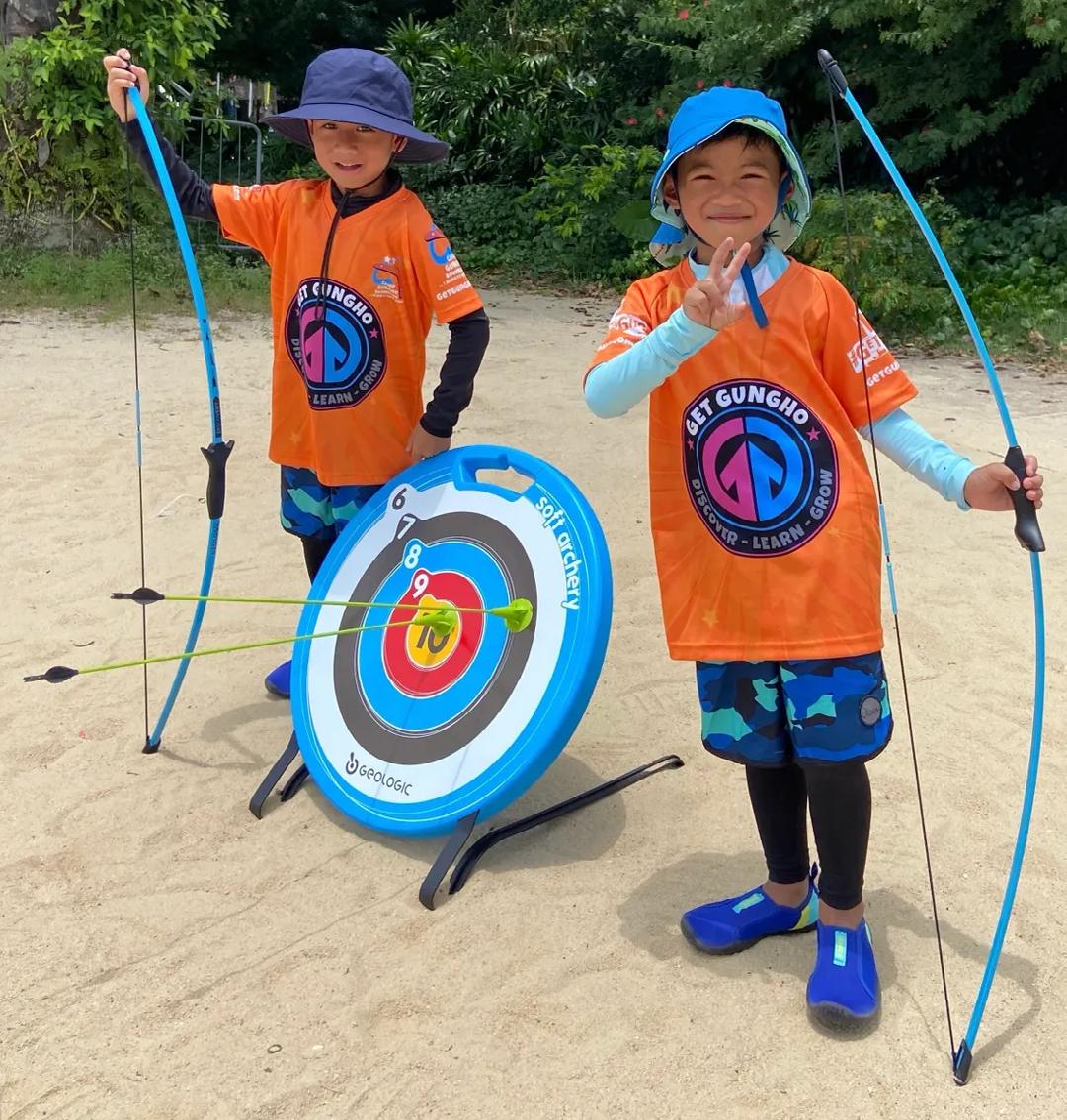
CUFA’s action-packed holiday camps are great for kids aged 4-13 years. They’ll learn the meaning of teamwork while having fun, making friends, and getting busy with problem-solving skills. There are half-day and full-day camps available for different age groups in July and August. Learn more here
Camp Asia's Legendary Summer Camps are back, bigger and better! With many camps selling out like hot cakes last year, they are bringing back crowd favorite camps along with brand-new ones to keep it fresh for returning campers. From June 3 to August 2, Camp Asia will be offering more than 15 specially curated camps for kids ages three to 16. And bonus – AAS members can use promo code AAS50 to enjoy $50 off! Find out more here
For a well-rounded experience, The Mindful Camp program includes mindfulness, art, time in nature, and sports play. Kids can try new experiences, have fun, and create memories with new friends they meet! For more details, click here
Campers at b_together’s Make + Do camps can look forward to making innovative trinkets or cooking tasty creations. Plus, they get to take home social and soft skills which will empower them to better express themselves in healthy ways. These creative camps also integrate elements of physical activity to support healthy bodies, mindfulness to encourage calm self-reflection, and significant time for outdoor exploration around the club’s vast and lush natural surroundings. Find out more here
The SAS Summer Semester offers a wealth of opportunities for kids! Students in preschool and pre-kindergarten can explore topics like STEM, baking, and cultural exploration through language learning and art. Elementary school students can enjoy STEAM-based projects, video game design, and vlogging. Middle and high school students can explore topics such as creating music videos, local ecosystem exploration, and Singapore’s sustainability efforts. With more than 130 courses on offer, there really is something for everyone. Learn more and sign up here.
Newtonshow is another camp offering a wide range of activities. They are hosting a series of exciting science and multiactivity camps this year, along with Maker.sg camps cover 3D modeling, Lego EV3, and basic programming, among other intriguing topics!
From Space Odyssey and Science Discovery-themed camps to art and cooking, there is something that will appeal to every kid, no matter what their interest.
Learn more here
Whether your child is sporty and active or enjoys tinkering with their gadgets, there is always something for every child at XCL Camps! Their theme camps include activities for the Athlete, Scholar, Artist, Techie,
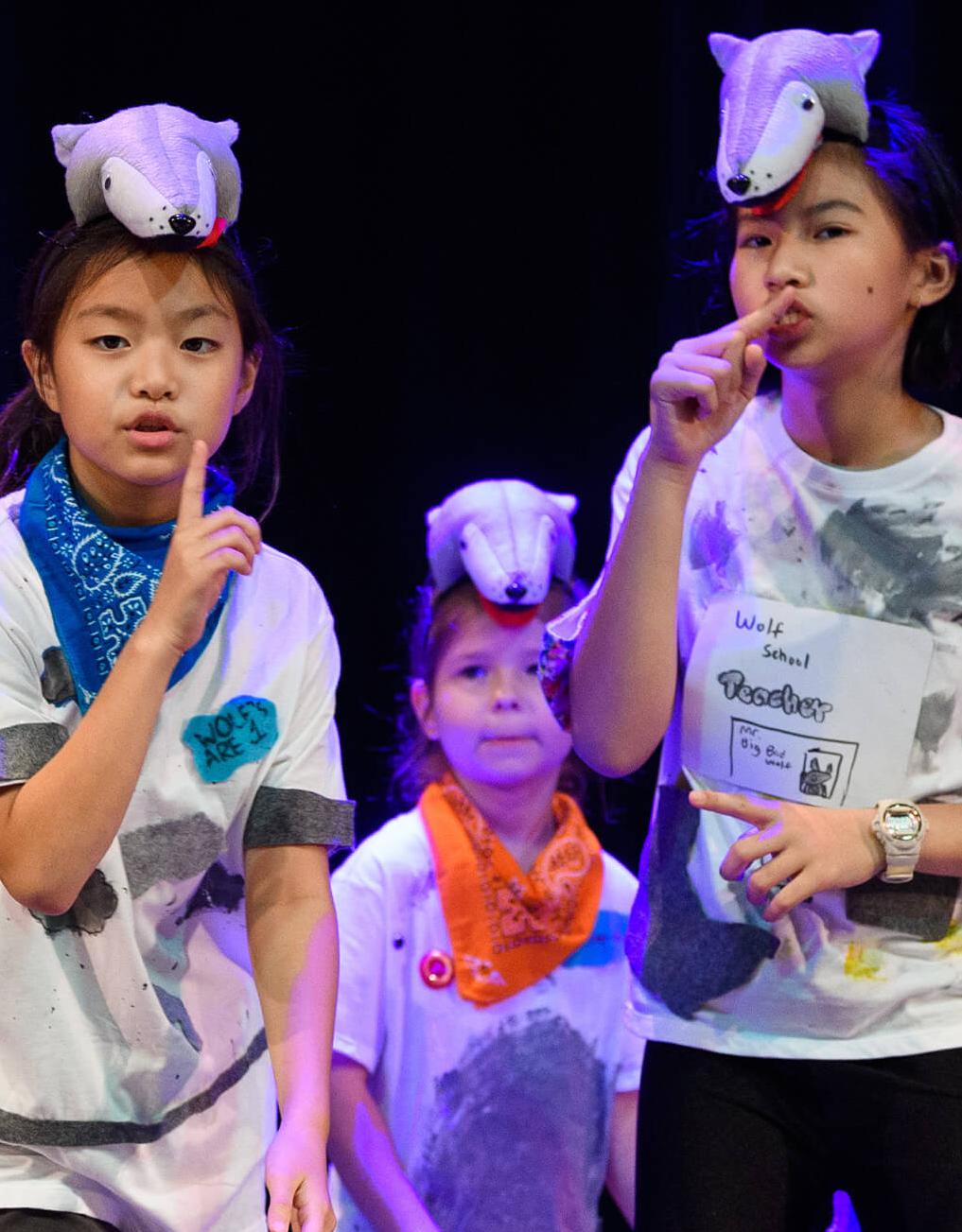

and All-rounder. The camps are designed to provide structure and routine for children in a safe and conducive learning environment.
Learn more here ay cam
Hollandse Club
The Hollandse Club Summer Adventure Camp welcomes non-members to join in the excitement! Each day offers a diverse lineup of activities including tennis, swimming, musical theatre, cube cubs, and movie screenings, ensuring a day packed with fun and adventure. Find out more here
This one is for the older kids in grades 8 through 12. The Science Summer Camp is designed to stir curiosity and inculcate a life-long fascination for science into the students through inspiring lectures by university professors, creative workshops and engaging demonstrations at stateof-the-art laboratories at NUS for an experiential learning in a supportive and intellectually stimulating environment. Learn more here.
Coding Lab provides a thoughtfully curated curriculum for ages 5 to 18, with something for everyone. From making your first game or animation to discovering the secrets behind popular games like Geometry Dash, Artificial Intelligence technology, Python role-playing games and computer graphics, and web apps – there’s so much to create this summer holiday, so grab a slot now!
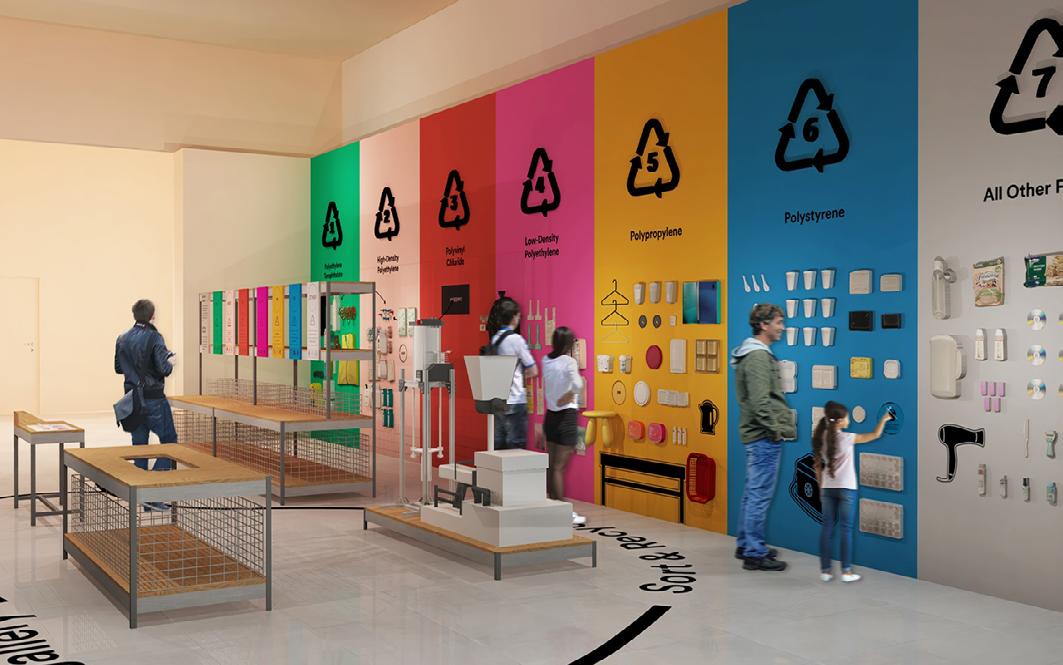
Learn all about plastic and recycling at the National Museum of Singapore's exhibit, Plastic: Remaking Our World, on until June 23.

The Singapore International Festival of Arts (SIFA) returns from May 17 to June 2, following the theme "They Declare." A highlight of the festival is a mesmerizing puppetry show telling the story of Moby Dick


Borealis brings the Northern Lights to Singapore with a preview on May 4 at 7:30pm, where artist Dan Acher will share his inspiration behind the installation. From May 5 onwards, Borealis will illuminate every Monday (8pm to 8.30pm) and every Saturday and Sunday (9pm to 9.30pm). Admission is free.

The iconic ballet, Swan Lake, will be performed by the St. Petersburg National
Singapore on May 24 and 25.
i Light Singapore 2024 (iLSG 2024), returning for its 10th edition from May 31 to June 23. Organised by Urban Redevelopment Authority (URA), this year’s festival will light up more than just Marina Bay and its neighbouring precincts – it will also be activated in Tanjong Pagar for the very first time.
Ballet Theatre in By Kyle Hegarty
By Kyle Hegarty
You may already know that baby strollers here are called "buggies," but do you know why that exact stroller your friend bought back home is four times the price here? Nobody does! It’s just another example of the mysterious and wonderful journey you will take as you raise a family here in Singapore. I mean, for that price, you could pay for a weekend trip up to Bangkok to get a vasectomy, right? But since it’s too late for that, let’s look at what you need to know in order to make the most of this exciting situation.
Now that you’ve bought that stupidly expensive buggy that cost more than your first car, you’ll need to work through this extensive list of what you’ll need to do next:
1) Get a live-in helper.
Once you’ve gone through this entire checklist, you’ll be ready to put all of your focus on the family. Of course, you’ll need to consider how to pay for all of this, and the most common way is to work, pretty much all the time. But it will be worth it, right? Work hard so you can spend quality time with the kiddos as they grow up!
And the kids grow up so fast!
There is nothing more special than coming home from an overseas business trip to have your toddler point up at you and say "estranghero," which is Filipino for "stranger."
They soak up everything, don’t they? From cute Singlish phrases to your life savings, these little tots will make you glad you chose Singapore to raise a family.
Another tip: be sure to stay in touch with friends and family back home! Your old friends in the US will understand what you’re going through, so feel free to openly discuss your challenges in raising a family in Singapore. “Our helper is not ironing bed sheets properly;” “traffic in Bali is awful these days;” “the 50-meter pool (next to the slightly smaller pool) is being cleaned at inconvenient times;” “or I had to spend five minutes filling out my local taxes.” These and many other issues will earn you full levels of sympathy from those you left behind back home. "That sounds difficult," they’ll say, "please, tell me more about that one time you had to figure out how to use your washing machine." And you’ll explain it again, but sometimes it will seem your old friends don’t really understand you anymore. Don’t worry! This is all part of your journey to becoming more worldly. (Check out the Head Space column on page 26 on what you should say instead!)

Sometimes, you just want to kick back with a $17 glass of Tiger beer and reflect on the fact that your friends back home think you've changed. It's probably because you now call a stroller a buggy, not because your budget for weekend brunches is greater than the median income of a US family of four.
That’s why you go back to the US to visit from time to time. That 24-hour commute can be challenging, but wait until you do it with young children! This is really a special time to bond with your kids and future ex-wife. When you start defining a "short flight" as anything less than ten hours, you know you’re an expat! Sure, there will be crippling jet lag the entire time you are back, but this is part of the adventure, isn’t it? You do this to make sure your kids grow up appreciating what it means to be an American and not just carry the life-long burden of global taxation.
At the end of the day, when you lay down in bed after checking flight prices to Bangkok for some reason, it's just you and your deepest thoughts, where you reflect on expat life, the trials and tribulations, the diverse friends you've made, the travel adventures you've had, and the experience you've given your young family. As you fade off to sleep, you hope and wonder if these sheets were ironed properly.

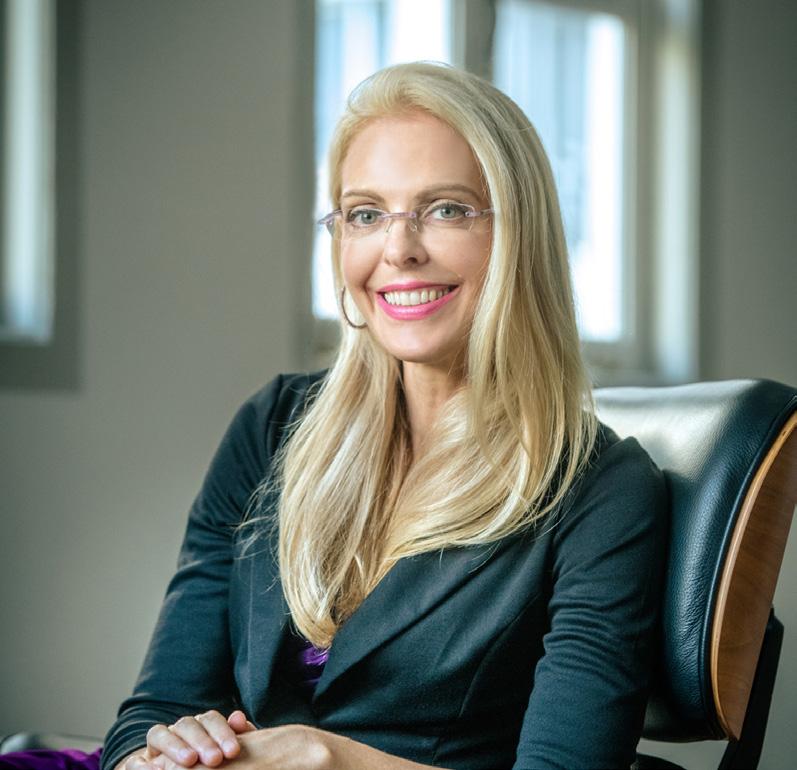
AITFCC helps individuals and couples address difficult relationship and life issues.
We specialize in difficult cases related to anxiety, depression, infidelity, anger and life transition.
We provide sleep help through product Babysleepfairy.
We have a portal, www.mynewbeginningsclub.com, and a wide range of hours.
Contact us now.
We have a new baby in our house: a Goldendoodle puppy named Whiskey. We haven’t had a puppy in almost 20 years, so adding our sweet furbaby has been a huge, happy, crazy adjustment for our family. There’s not much better for teen kids than a new puppy, but let’s just say that having a puppy in Singapore versus New York City, where our last dog, Digby, spent her puppyhood, is a whole different ball of wax.
For starters, there’s the weather. If you think the Little Red Dot is hot, imagine what it’s like to deal with Singapore’s sweltering heat wearing a luxurious fur coat. When we imported our mutt from the US, we chose to keep her naturally long fur cut short, but I’m having a hard time cutting off all those beautiful puppy locks. So, for now, I’m walking her along the Singapore River very early in the morning before it gets too hot outside.
Not only do you have to figure out a weather-friendly hairstyle here, but then there’s the question of whether to boot or not to boot. You’ll see lots of pooches in booties here, most to avoid the hot sidewalks. I’ve only ever used them for icy New York sidewalks, so they kind of seem wrong to me here. Some dogs also get bad skin rashes, so keep an eye on your pup.
We’ve taken Whiskey to Palawan Beach, where mutts can run free and swim until 9:00 AM, and then you can grab brunch at FNC. Fun! Some dogs don’t do well with the seawater and get rashes, so be sure to give your pup a
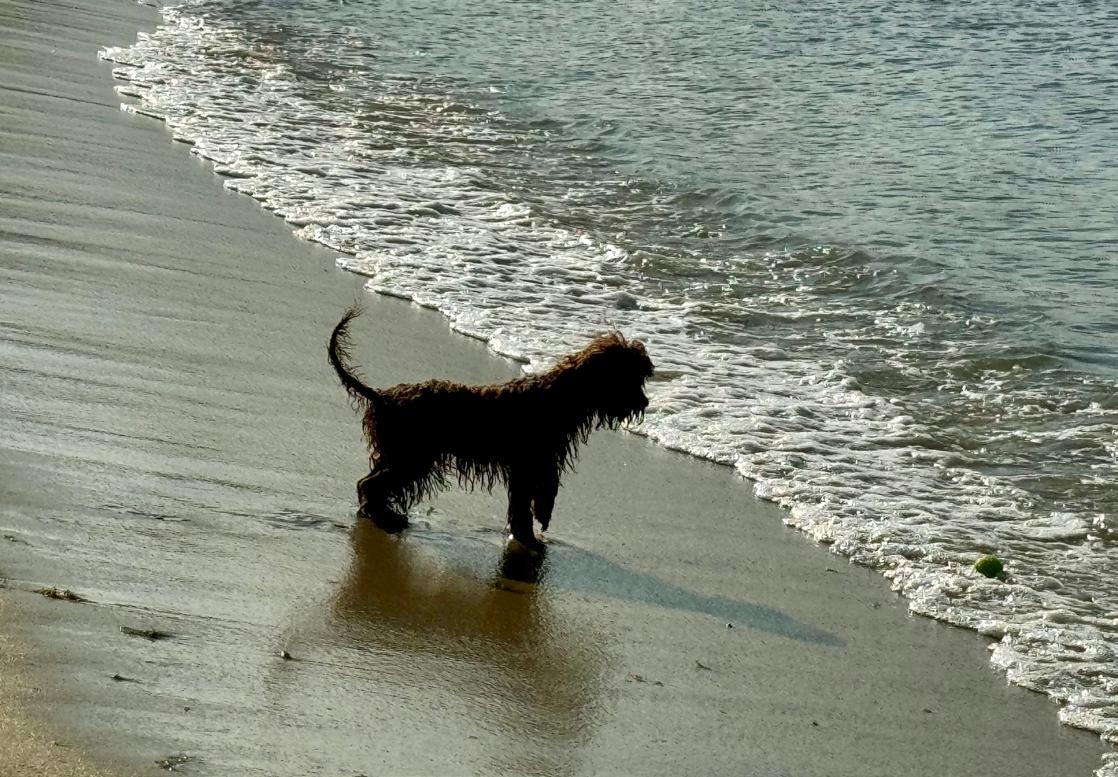

that we don’t have a car and had a little trouble getting a pet taxi home.
There are also many swimming pools for dogs here in Singapore. With 19,000 square feet, Wag n’ Wild is Singapore’s largest dog waterpark. You book an hour for the dogs to enjoy the many pools, and people are encouraged to be in the pool with their pups. With the purchase of an entry ticket for your dog, you are entitled to two free human entries, but you can top up for additional human guest tickets at $6 each. There’s a shower facility for dogs, but you have to bring your own shampoo. Note that you must provide a copy of your hound’s vaccine record to enter.
There are some really fabulous walks for dogs (and people, too). NParks has a great site for dog owners with all sorts of suggestions about where to take a walk. We used to take Digby to the Marina Barrage as she liked the breeze there. And we also took long strolls at MacRitchie. Here are
a few other favorites below. Be sure to take some water with you, as most don’t have water along the way.
• Bukit Timah Nature Reserve
• Central Catchment Nature Reserve
• Labrador Nature Reserve
• Sungei Buloh Wetland Reserve
• The Central Nature Park Network
• The Sungei Buloh Nature Park Network
Everybody has their favorite dog run in Singapore, but many people I know really like the West Coast dog run. It’s wide and spacious, and there are even two self-serve dog washes there. See the sidebar for some other favorites.
We were in Europe for Spring Break, where dogs are allowed pretty much everywhere – even in the grocery stores. Singapore isn’t nearly as dog-friendly, but almost all the outside cafes will welcome your pup. Here’s a list of 200 such places! Some, like Tanamera Coffee on the Singapore River, offer bowls of water.
And several Starbucks are now welcoming pets. There’s a new pet-friendly outlet at Gardens by the Bay and one at Jurong Lake Gardens. Pets must be healthy and restrained at all times, and dogs must be on leashes. The exciting thing? Your pup can have a free puppuccino, a small
Central
Ang Mo Kio Park Dog Run
Potong Pasir Ave 1 Dog Run
Our Space @ Tai Gin Road
Villa Verde Park (dog wash)
North/North East
Punggol Waterway Park Dog Run
Punggol Park Dog Run
Sengkang Riverside Park Dog Run
Sembawang Park Dog Run
Yishun Park Dog Run
South
Tiong Bahru Park Dog Run
Tiong Bahru Sit Wah Dog Run
The Palawan Dog Run
Starbucks cup of whipped cream, made especially for your dog. There’s no coffee, tea, or caffeine of any kind in the cup, just straight-up whipped cream. Heck, maybe I want a puppuccino, too!
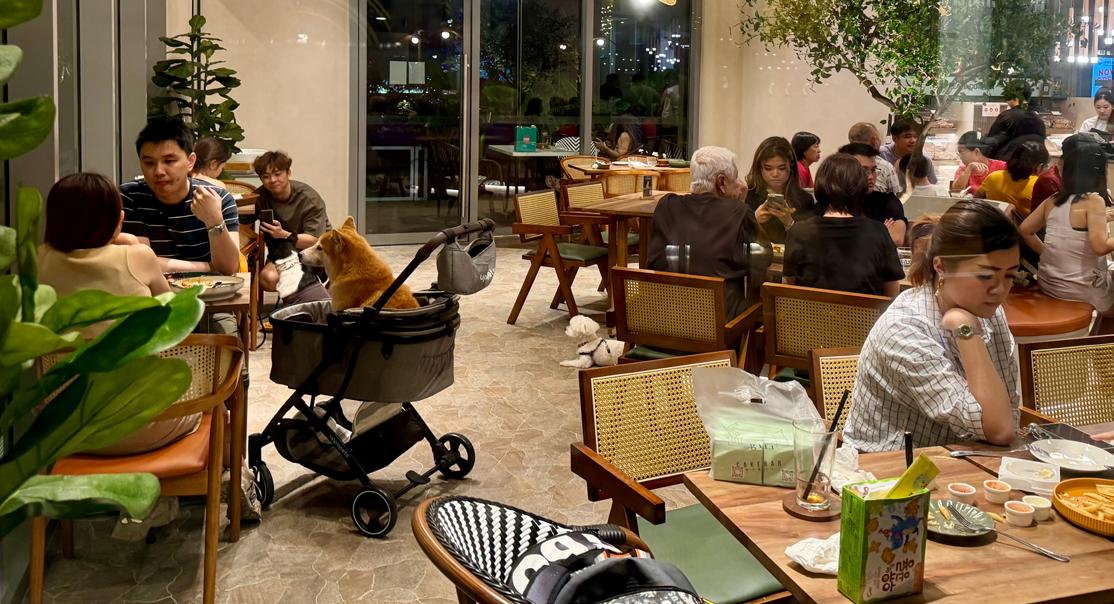
One Holland Village is a new, open-air, pet-friendly all and one of the best spots for your fluffy friend. We took Whiskey one Saturday night (yes, we’re a party family) and so many dogs were there! I mean, hundreds of mutts. The place is truly dog heaven. We're talking drinking fountains, poop bag dispensers, leash hooks, designated pet lifts, and an expansive space where you can walk Rover. There are many al fresco spots where your pup is welcome, but you can also take FiFi inside places like Baskin Robbins and Plain Meredith, which has a full menu for your canine companion. And yes, they do birthday parties for dogs, too.
Bedok Town Park Dog Run
Telok Kurau Park Dog Run
Katong Park Dog Run
Dog Run @ East Coast Park, Parkland Green (dog wash)
Sun Plaza Park Dog Run (dog wash)
Tampines Central Park Dog Run
Mariam Way Dog Run
Koon Seng Park Dog Run
Pasir Ris Street 51 Dog Run
Pasir Ris Park
Mayfair Park Dog Run
Bukit Gombak Park Dog Run
West Coast Park Dog Run
Clementi Woods Park Dog Run
Jurong Lake Park Dog Run (dog wash)





Inspired by the joy of passing down traditions. From birthdays to graduations, celebrate the milestones of your children with grace and sparkle.


We turn your sparkling imagination into reality with bespoke fine jewellery set in 18K gold and diamonds. Our selection of precious and semiprecious gemstones is sourced from all over the world, available as loose gemstones, set jewellery, and personalised settings for the woman seeking unique, statement finds.

A girls’ night in has never been this glamorous. Let our bespoke jewellery concierge come to you, champagne and canapes included! www.tandcgems.com

Parents with children in Singapore easily enjoy a multitude of social networks through their children’s school and sports, parents’ activities, and more. When the children graduate, and parents stay, new freedoms open up, yet finding new networks and keeping in touch with far-flung family members can seem harder. However, being an empty nester can be a fantastic experience with some adjustments and initial effort.
For most of the year, families with children are tied to the school day and vacation schedule. When the children head off to college, those constraints disappear, and time for weekend or evening activities that weren’t accessible opens up.
“It's been a fantastic opportunity to reconnect as a couple,” says former AAS board member Dana Hvide, “and focus on our joint interests.” She also enjoys being able to sleep in.
Another advantage is “freedom to travel in Asia as home base,” says SAS Foundation board member Aaron Kim, whose horizons expanded when one child headed off to college and will expand more when the second one heads off this summer. Dana agrees, saying that “not being tied to a school schedule for travel” has opened up new vistas.
There are also more opportunities to get involved in community activities outside of school. Participating in or attending events such as concerts, non-profit volunteering board meetings, talks, dinners, or book clubs in the evening or on a weekend is now possible.

While empty nesters have more time for their own activities, they still want to stay in close touch with their family. Digitization has made connecting far easier than before
Aaron talks with his children on FaceTime and WhatsApp about five times a week, he says, and with siblings and parents every couple of weeks. Dana similarly connects with family and children in other countries on WhatsApp and iMessage almost daily. She and her husband also have a standing family Zoom meeting each Sunday that their entire family prioritizes, and she says seeing each other for those few hours is “the highlight of our week.”
Some people who have less frequent conversations do so for a reason and still feel connected. “When it comes to communicating with the boys now that they live in the US,” says AmChams of Asia chair Steve Okun, “my expectations are much more last century than this one. I expect to speak with each of them once a week, same as I did with
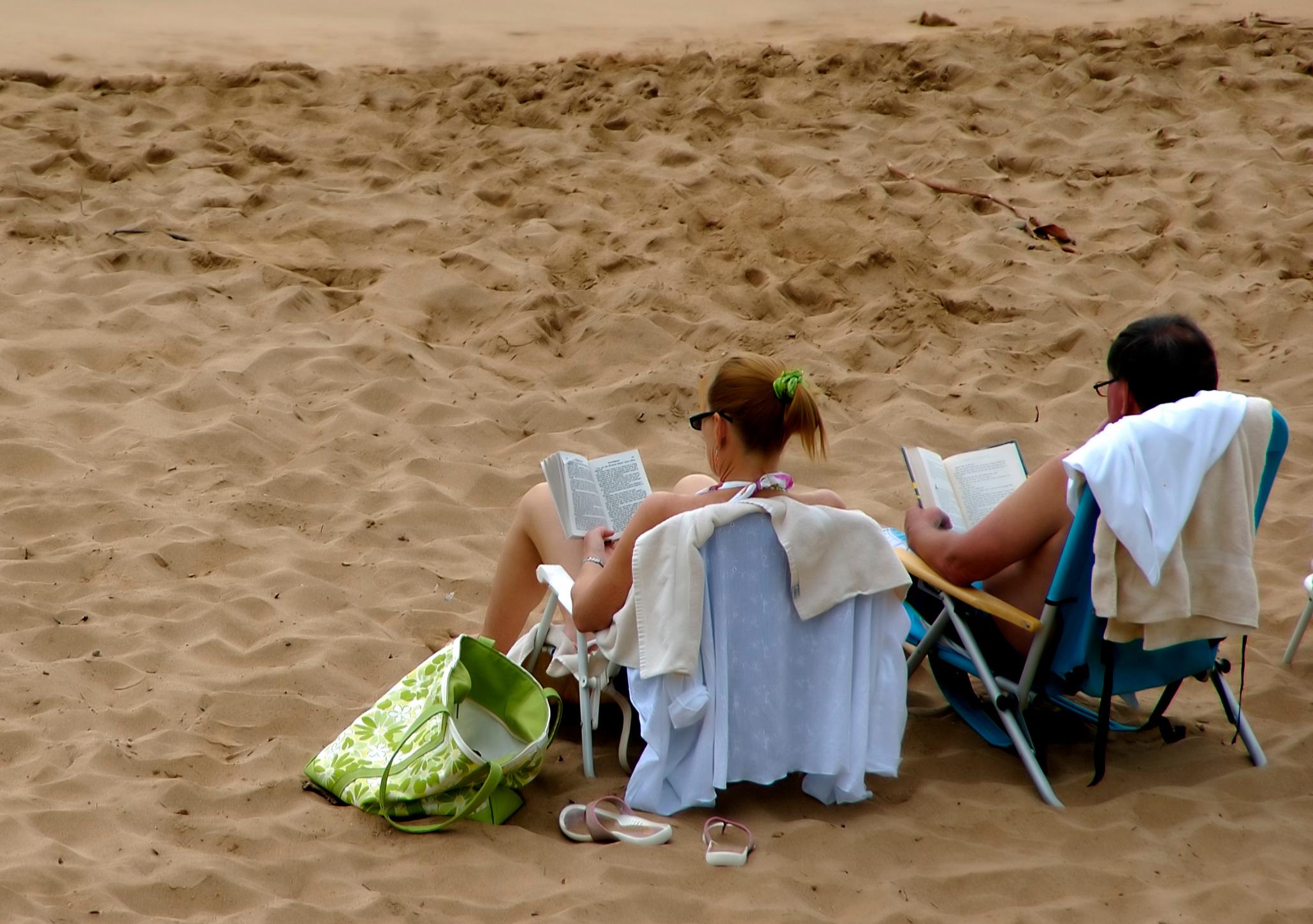
my parents when I was away at college and then early in my work career. While a few times a week we likely go back and forth with messages via WhatsApp on trivial things, I try to limit even that to give them their freedom.”
Those of us whose children don’t like talking on WhatsApp or most other digital media and connect more sporadically have much to learn from these connected families.
Even though there are new freedoms and advantages, parents whose free time outside work and home used to revolve around school activities and transportation for their children face an adjustment. Gone are the ready-made networks at school, and there are long hours to fill. Creating new networks, connections, or activities can take conscious effort and clear direction and become part of different communities.
What makes it easier here, perhaps, is the variety of activities and opportunities for people who are willing to put in time to build new connections. Activities in the American community, social clubs, book clubs, sports groups, and volunteering at non-profits are just a few of the many opportunities.
While it can take effort initially, taking advantage of the time available for travel or other activities and leveraging the many ways to build new networks that offer friendship, learning, and more can lead to a thoroughly enjoyable life as an empty nester.
Be sure to check out the many activities AAS offers.
“The biggest challenge is creating a community without the natural connections found through school and our children's activities,” Dana says. “Many families leave Singapore when their children graduate, and rebuilding a social network can be difficult.” That said, she has found great opportunities to try new things and meet people through affinity groups.” Aaron also noted that it can seem a bit harder in Singapore because sometimes there is not enough of a variety of things to do and places to go here.
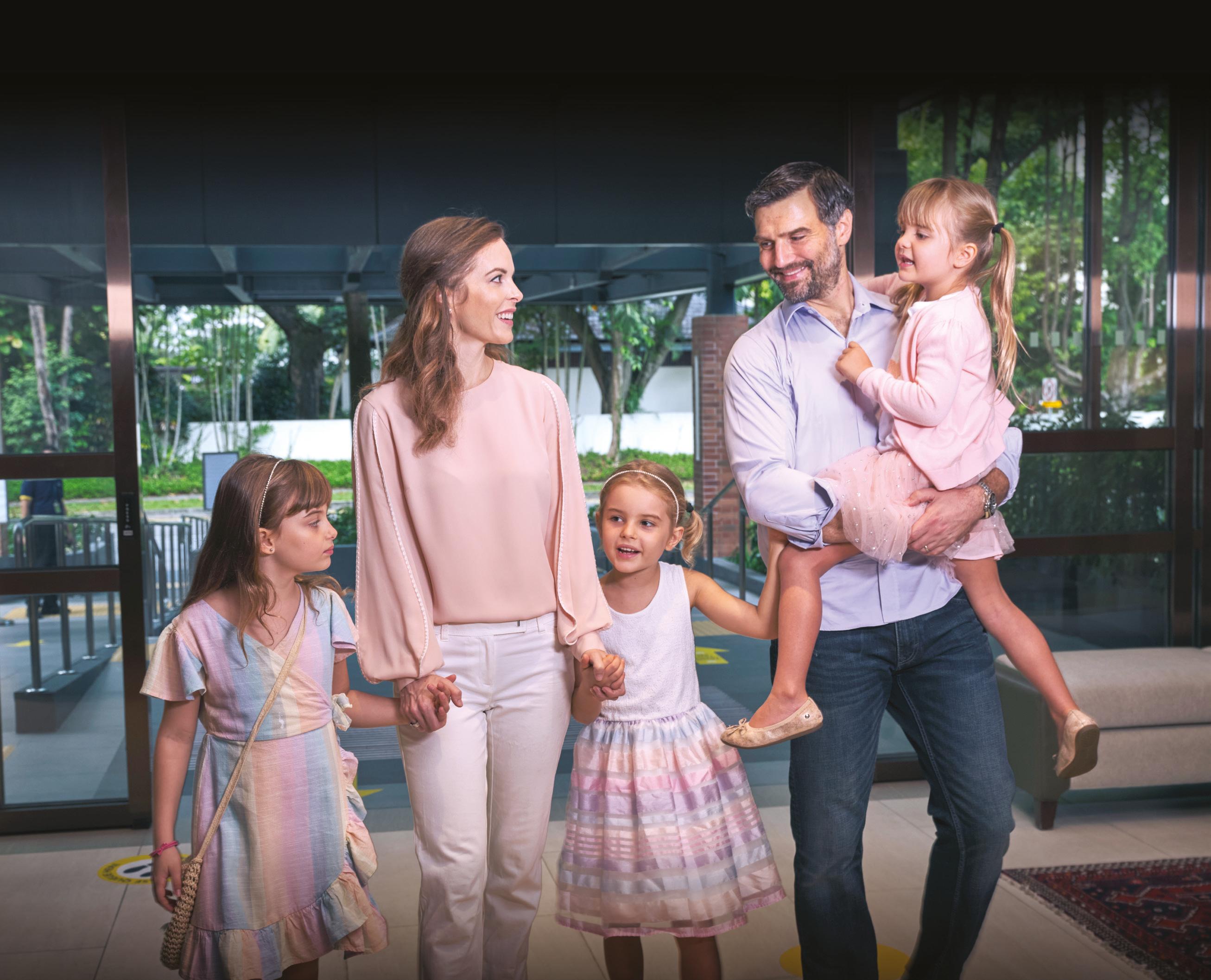


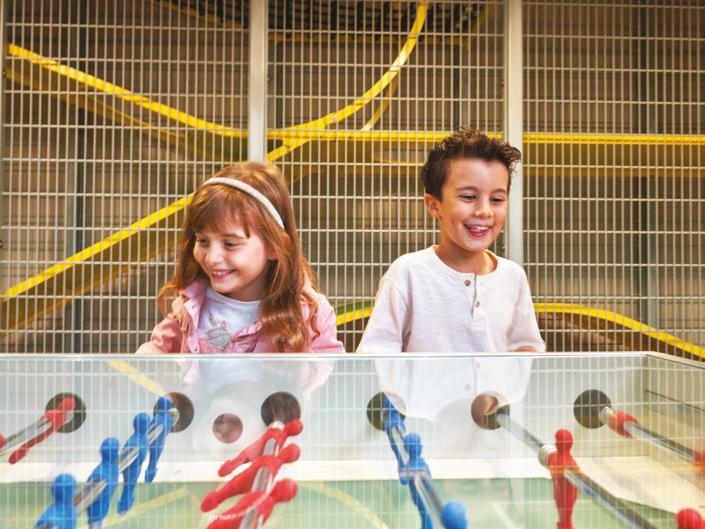


XCL American Academy (XAA) proudly announces the grand opening of its brand-new campus, showcasing state-of-the-art facilities designed to inspire and empower students on their educational journey.

Nestled just a 20-minute drive from the bustling city center, the new XAA campus promises an immersive learning environment that nurtures a pioneering spirit and a lifelong passion for knowledge. Equipped with modern facilities, XAA sets the stage for students to thrive academically and creatively.
Since its opening in 2022, XAA has been dedicated to cultivating the next generation of leaders and pioneers. With a commitment to staying at the forefront of educational advancements, the opening of the new campus marks a significant milestone in XAA’s mission to provide an authentic American International education in Singapore.
Key Features of the XAA Campus Include:
• Modern and Bright Classrooms
• Multipurpose Gymnasium
• Art Rooms
• Music Rooms
• Dance Studio
• Common collaboration spaces on each floor
Moreover, as part of XAA’s commitment to offering unique opportunities for its students, the school provides access


to the world-class facilities at its neighboring school, XCL World Academy, conveniently located adjacent to the XAA campus. From an all-weather 50-meter Olympic-sized swimming pool to a FIFA sized outdoor sports field, students will have timetabled access to various facilities to support their holistic development.
“Wearethrilledtoopenournew campus,whichrepresentsasignificant investment in the future of our learners’ education,” said Tammy Murphy, Superintendent of XCL American Academy and XCL CEO of Singapore Schools.
“AtXAA,wearededicatedtoinspiring thenextgenerationofpioneers, fosteringachallengermindset,and empoweringstudentstorealizetheir fullpotentialwhileupholdingthe fundamental American values of respect, honor, and courage.”
“Ournewcampusisatestamenttothis dedication,” Murphy continued. “With cutting-edgefacilitiesandadynamic learningenvironment,weareconfident thatXAAwillcontinuetoprovidea nurturingplatformforstudentstoexcel

academicallyandsocially,preparing themforsuccessinanever-evolving world.”
Parents and prospective students are invited to book a school tour to experience the new learning spaces offered at XAA firsthand.
For more information, visit www.xaa.edu.sg or contact admissions@xaa.edu.sg.
About XCL American Academy (XAA):
XCL American Academy (XAA) is an international school in Singapore that offers an authentic American International education for students aged four to 14. With a focus on academic excellence and character development, XAA’s experienced faculty and staff are passionate about providing high-quality education and ensuring a safe and supportive atmosphere where students can thrive and reach their full potential.


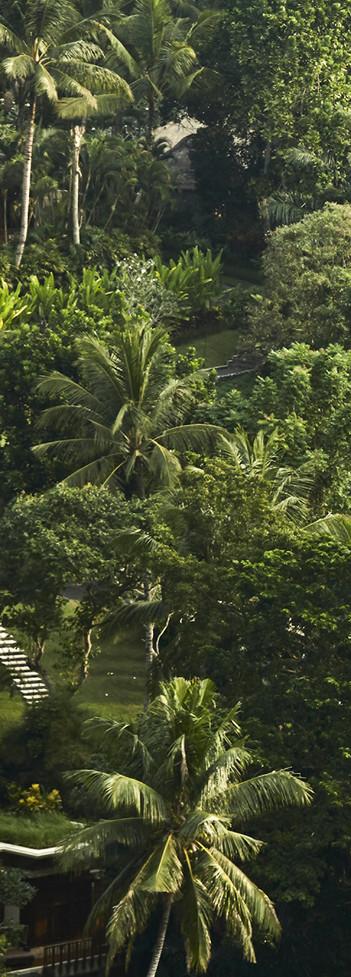
I had a hot and miserable preteen on my hands. We were about to go rafting, something she’d done previously in Colorado and enjoyed, but in typical preteen fashion, she was opposed to anything on the agenda in Bali. Like most teens, she would rather be on the beach or in our hotel room. To get to the boat launch along Bali’s longest river, we followed a path of stairs crisscrossing down a cliff through the jungle. She persevered, and once we got to the first set of rapids, I saw the faintest hint of a smile come out. Our raft captain deftly paddled us down the river, punctuating the air with “yip yip!” and “wahoo!” and even some slightly maniacal laughter as we went through rapids and warning us when the boat was about to hit rocks along the river like a bumper car with a “boom boom!” His energy and enthusiasm made it that much more fun. Afterward, my daughter practically begged to go rafting again – high praise from the 12-year-old!
We’ve all been there—you’re trying to plan a family vacation, and half of you want to chill at the beach while the other half want to get out and do things. How do you decide which to do? Do you really feel like planning two different locations and figuring out how to get from one to the other?
Four Seasons Bali recently invited me to experience their unique solution for those torn between a beach vacation and a jungle adventure:

Bali, Twice the Magic. This exclusive package that my family and I were treated to begins at Four Seasons Bali at Jimbaran Bay, where you can unwind by the 57-meter pool facing the beach or enjoy your private plunge pool in your villa. The adventure part of your trip kicks off with a thrilling rafting experience along the sacred Ayung River to Four Seasons Bali at Sayan, a hidden gem nestled in the jungle outside of Ubud. Here, you can immerse yourself in the sounds of the rushing river and the view of the treetops while you plan your next adventure, be it a biking tour or a day in the life of a Balinese farmer.
Both resorts, true to the Four Seasons standard, offer impeccable service that commences as soon as you step out of Ngurah Rai International Airport in Bali. A Four Seasons representative welcomes you and guides you to the waiting driver, who will transport you to the resort. Jimbaran Bay is a mere 20 minutes away from the airport

(the infamous traffic conditions in Bali notwithstanding). The resort is situated across the bay from the airport, making it a perfect spot for aviation enthusiasts to watch planes land – yet miraculously, you can’t hear them! Sayan is a bit further, at a 75-minute drive from the airport or a scenic two-hour rafting journey.
One of the many unique experiences offered in Sayan is called "Can You Keep a Secret," which includes a tour of a typical Balinese village and home and a visit to a secluded water temple where we participated in a melukat bathing ritual. After reciting mantras and making offerings, we prayed to each of the eleven gods important to the Balinese blend of Hinduism and Buddhism, then cleaned ourselves at each with water running from the Ayung River. The ritual is more about cleansing the mind and spirit than the body. The experience was refreshing and deeply grounding.
Similarly, in Jimbaran, you can immerse yourself in the local culture by touring the fish market and cooking a traditional Balinese lunch with Chef Surya. As we prepared our fish, sambal, salad, and dessert at Jala, Surya excitedly explained each ingredient and its importance to traditional Balinese food. I was struck by how much both Four Seasons Bali locations emphasized the local culture, from the architecture to the art, and even rice and various herbs and vegetables grown on-site. The staff members knew about the local foods and traditions and were happy to share their knowledge with pride.
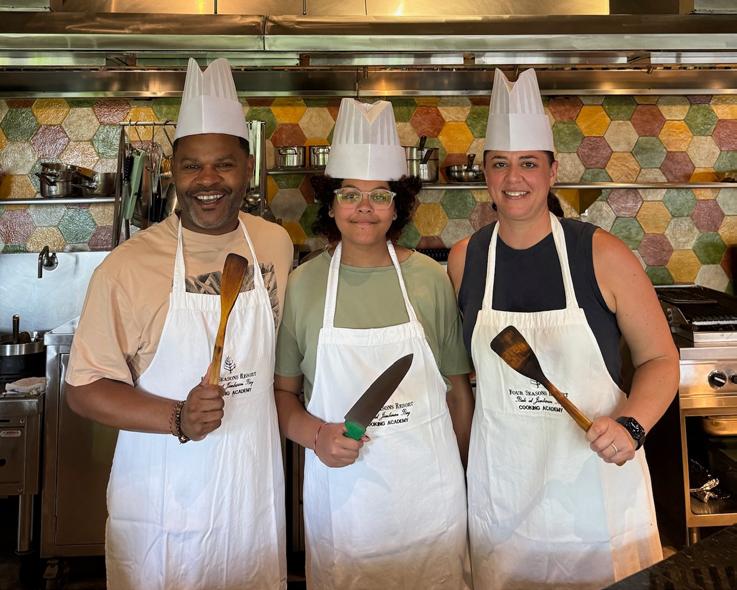
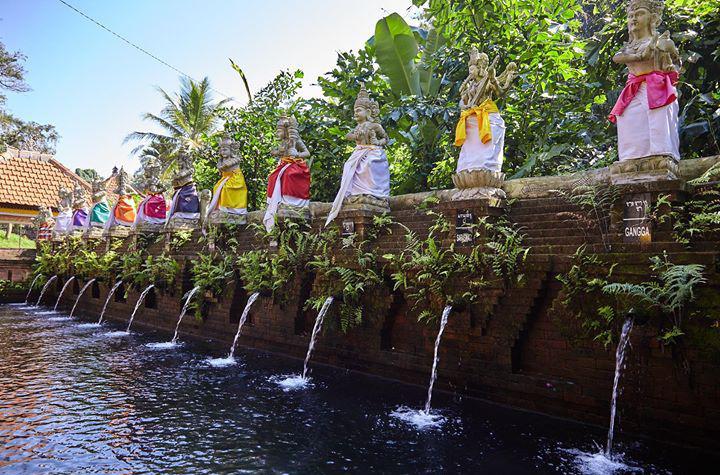
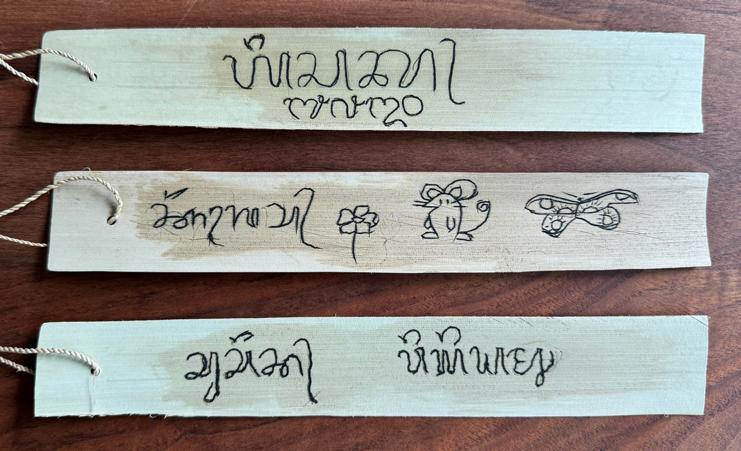
We even learned how to write our names in Bali’s traditional script, Aksara Bali, from the resort’s cultural ambassador, Ibu Atik. She led us through the steps of translating an English name to the ornate script based on phonetics well enough that I could even figure out how to write my last name. I learned more about Bali than in other places I’ve visited.
If you’re traveling with young kids, chances are you’ll want to take advantage of the kids clubs at both resorts, which are beautiful little worlds of their own for little ones to enjoy. The clubs offer cultural activities that are age-appropriate and fun, such as Balinese dance classes, basket weaving, and fruit and vegetable carving. The kids club at Jimbaran has recently been renovated and features sustainable materials, educational wooden toys, a fantastic book selection, and its own small pool. The staff across the resorts are so good with kids that my daughter commented at dinner one

night: “I really like how they actually pay attention to kids and ask me what I want. In most places, they just talk to the adults.”
Speaking of sustainability, at the resort in Jimbaran, they have taken a space that had been sitting unused and turned it into TELU bar. They repurposed materials they found around the resort and in storage. They decorated the bar with art from local artists who upcycled materials to create a charming little cocktail bar that offers sustainably-minded cocktails and mocktails and supports
local charities. The bar is rooted in the Balinese philosophy of Tri Hita Karana, which roughly translates to “three causes of well-being.” The three causes are harmony with God, harmony among people, and harmony with nature. The charities that are supported by the bar and the drinks that are offered reflect each of these three principles. I really loved the entire concept, from the sustainability to the spirituality of it.
Back to the kids. Suppose you have a large family or want to vacation with extended family or friends. Or maybe you want a little more privacy. The Four Seasons at Jimbaran Bay has several residences in addition to the villas available. The residences range from two to four bedrooms, each with a private pool, full kitchen, a 24-hour personal attendant, and plenty of space to spread out. I toured a newly renovated four-bedroom residence, and it is magnificent. Two bedrooms are in a separate building with direct access to the pool, making it the perfect setup for two families. There’s an expansive patio with plenty of seating, a grill for outdoor cooking, and a separate cabana for lounging or doing morning yoga. You can even set up a private bar with a personal bartender. Need I say more?
Bali is so close to Singapore that most of us have probably been there, maybe even multiple times. I must admit that after the first time I went, I wasn’t in a rush to return. It didn’t feel much different from any other beach locale. I didn’t experience the culture where I stayed and didn’t learn about the spirituality most Balinese people live by. I honestly didn’t understand why people love Bali so much. But this experience changed that. I learned so much from the fantastic staff at both Four Seasons Bali at Sayan and Four Seasons Bali at Jimbaran Bay, and that is what makes me want to go back and learn more. Maybe next time, I’ll even get an I ♥ Bali t-shirt.
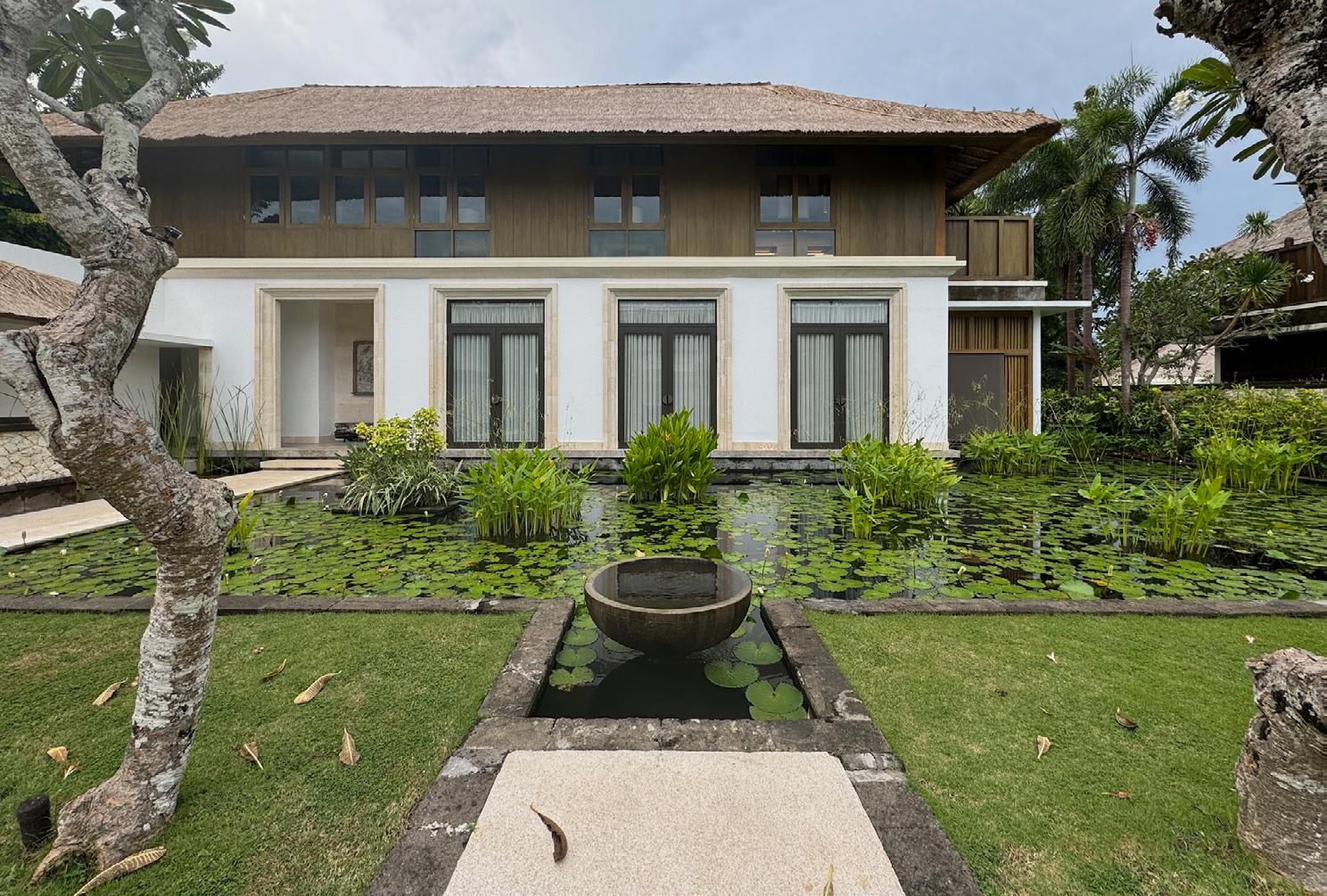

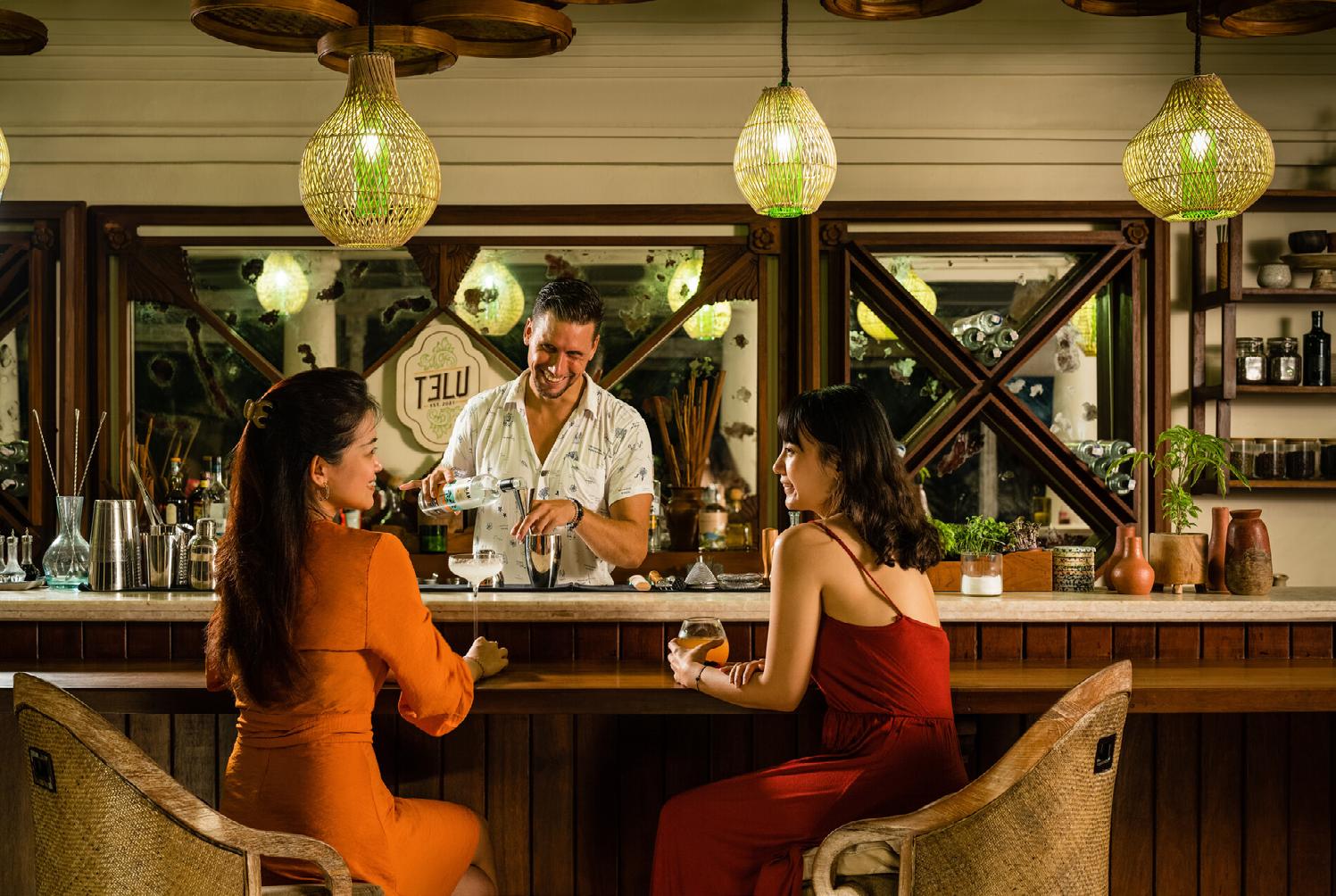

If your 2024 goals include getting promoted, changing careers, or growing your network, it’s likely that creating and cultivating social capital should be part of the plan. If reaching out makes you cringe, consider how you can make it work for you.
While expertise, hard work, and dedication are all important ingredients for getting what we want out of life – it’s hard to overestimate the role that social capital plays in professional and personal success. After all, we’ve all heard the expression, “It’s not what you know; it’s who you know.”
Yet, so many of us find the process of building social capital unappealing, overwhelming, or downright scary. Often, the people we see most focused on networking come off as over the top or fake –which is a perception most of us want to avoid, and for good reason.
But having social capital (or ‘juice’ as some people call it) is simply about building relationships. And the more genuine and real, the better. The key is finding a way to be authentic to yourself while making useful and mutually beneficial connections.
Here are some tips to start building your social capital without feeling like a door-to-door salesperson.
Too often, people start networking by focusing on people in a certain position (“I want to connect with the head of this company”). However, a better way to build your network is to reach out to people you like or admire. Assuming you have shared values, interests, or approaches –you’ll have a foundation for creating a genuine connection. Make sure to use your natural curiosity about them to ask questions – and do more listening than talking. This will help you decide if they are indeed someone that excites you and that you want in your network.

Of course, it’s also a good idea to try to diversify your network when possible. As you get more confident in creating connections – consider reaching out to people outside your immediate community or industry (but still looking for people that you respect).
Think about giving, not getting
When making new connections, adopt the credo of Max Goodwin from the television show New Amsterdam, “How can I help?” Let them know that you can be of service to them. If they ask how – be ready with an answer that ideally showcases your skills, strengths, or time. Maybe you have some ideas based on the information you gathered in learning about
them and can respond with, “I’d be happy to walk your dog when I’m walking mine,” or “I heard that you need information on that project. I’m meeting with the project lead next week. Would like my meeting notes?”
Don’t overcommit just to be nice
It’s easy to tell someone you’ll help them, but given that we are all so busy with our normal lives, it’s harder to actually deliver. Before offering your help (or saying yes to someone who comes asking for your help later), make sure that you can keep your commitment. Agreeing to help someone and then not doing it (or not doing it well) can degrade your social capital faster than not offering in the first place.
If capacity is an issue, it might help to create some criteria for deciding when it’s worth it for you to devote your valuable time and effort. For example, maybe you are looking for opportunities to help others while practicing a new skill and getting an opportunity to represent your community. This type of criteria will help you zero in on when you should say yes and keep you moving toward your goals as you build your network.
Don’t be afraid to leverage your relationships when the time comes
While giving is a big part of building social capital, the reason for building it is also to receive help yourself. So, when the time comes that you need something, don’t be shy. If you’ve done the work to create and nurture trust, you should feel confident to make your needs known and ask for
help. If you are afraid of being too transactional or needing to keep score, stay focused on the fact that you’ve cultivated a mutually beneficial partnership with someone who is invested in your success as much as you are.
Admittedly, building relationships takes time. It’s important to consider this a long-term project, and every week, think about one small act you can do to move closer to your goal of building social capital. The more time spent developing a strong, aligned network on the front end, not only will it be in place longer, but also the more pay-off you will receive on the back end when you need it, like networking for a new job, building a business, or helping you out in a pinch.
With a bit of forethought, creating social bonds can be a great way to deepen relationships at work or in your community and to extend your impact in areas that are important to you. If it starts to feel transactional or overwhelming, take a step back and consider: does this person agree with my understanding of the world? Is this conversation about them or about what I need, and is this the right task for me, based on my criteria? With this frame in mind, you’ll soon be rich in social capital!
